Back Pain in America: What Research Says About Manual Therapies
August 25, 2025
37 min
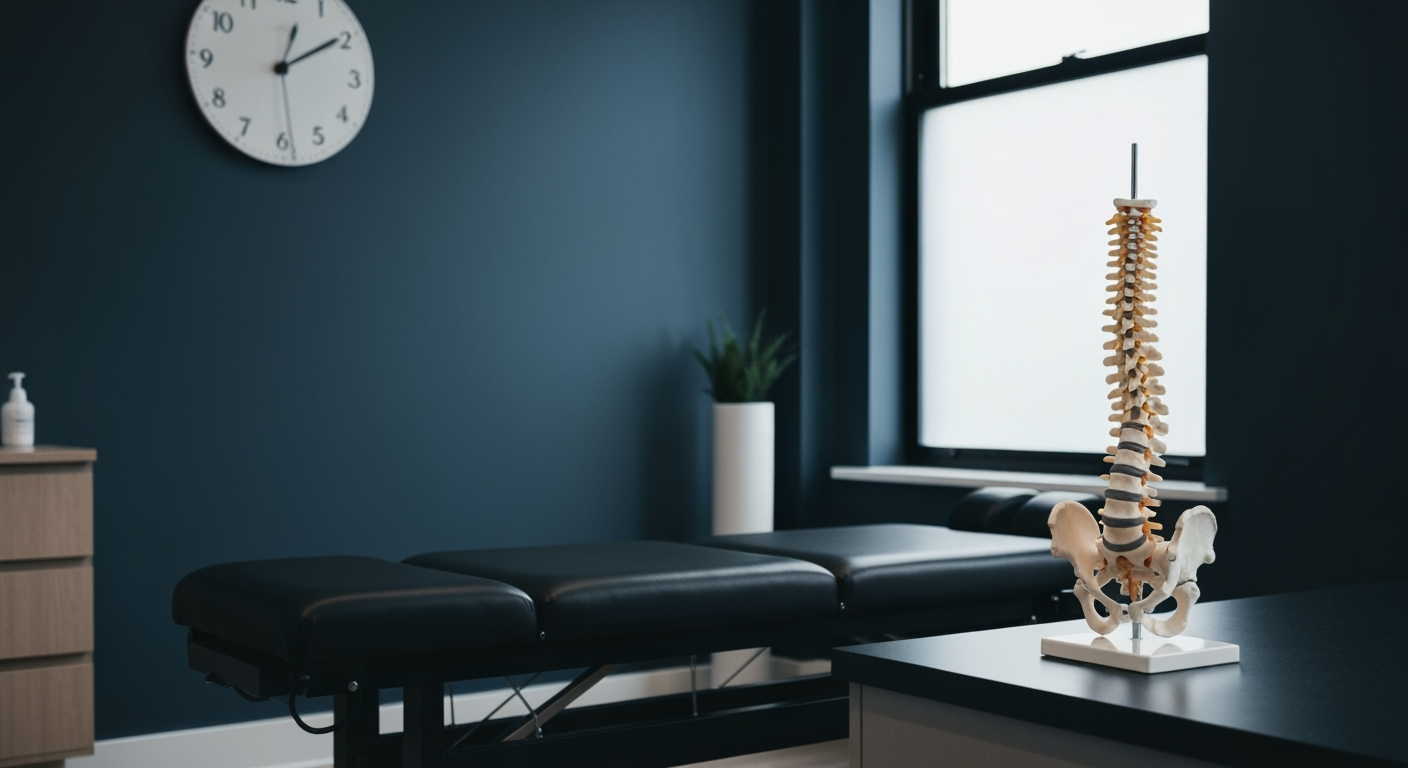
The Burden of Low Back Pain and the Promise of Manual Therapies
Low back pain (LBP) remains a leading cause of disability and healthcare utilization across America, affecting nearly 20% of adults aged 20 to 59. Despite numerous interventions, many patients suffer persistent or recurrent symptoms, underscoring the need for effective, safe, and accessible treatments. Among the variety of therapeutic options, manual therapies—including spinal manipulation, mobilization, and soft tissue techniques—have garnered significant attention. This article explores current research findings, clinical outcomes, patient perceptions, and evolving guidelines related to manual therapies for back pain in the United States, providing a comprehensive evidence-based overview for patients, practitioners, and policymakers.
Prevalence and Economic Burden of Low Back Pain in the US
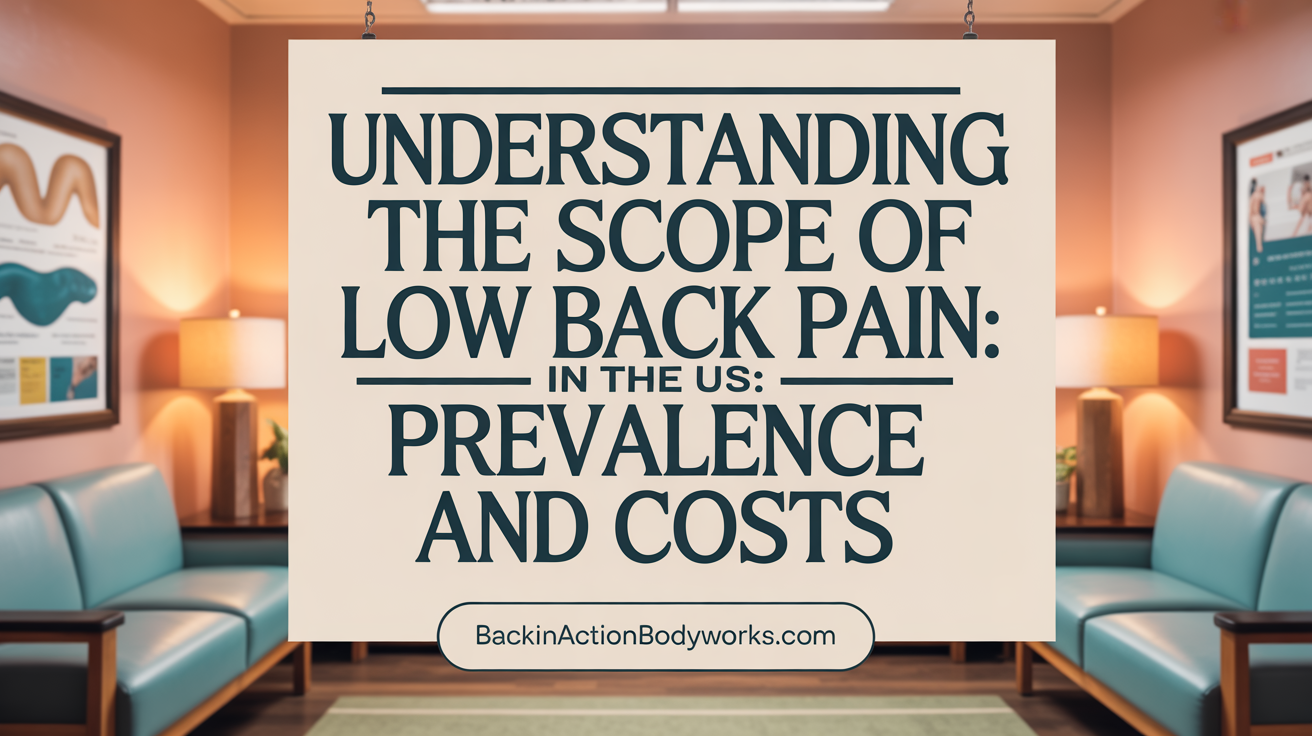
What is the prevalence of low back pain (LBP) in the United States?
Low back pain remains a widespread health issue across the United States. It affects a significant portion of the population, with estimates suggesting that around 19.6% of adults aged 20 to 59 experience it at any given time. Many individuals suffer from long-term or recurrent symptoms, which complicates management and impacts daily life.
How do manual therapies contribute to LBP treatment?
Manual therapy, which includes spinal manipulative therapy (SMT) and mobilization, is commonly recommended in US clinical practice guidelines for treating nonspecific musculoskeletal pain like LBP. Over 18 million adults in America seek manual therapy annually, highlighting its popularity. It’s valued not only for pain relief but also for its role in reducing dependency on medications, especially opioids.
What is the economic impact of manual therapies?
The financial burden of manual therapies in the US is considerable, with annual costs exceeding $3.9 billion. This figure encompasses various treatment expenses, reflecting both the widespread use of these interventions and their economic significance. Recent research suggests that early contact with physiotherapists, often involving manual techniques, can help lower overall healthcare costs by decreasing the need for imaging, prescriptions, and further interventions.
How effective are manual therapies for LBP?
Systematic reviews and randomized controlled trials indicate that manual therapy offers comparable short-term pain relief to sham treatments or no intervention, especially in acute cases. For chronic LBP, evidence shows that SMT and mobilization can produce benefits in pain reduction and function, sometimes surpassing other therapeutic approaches. Importantly, the safety profile of manual therapy is favorable, with most adverse events being mild and transient.
Overall, manual therapy remains a vital part of LBP management in the US, balancing efficacy, safety, patient preference, and cost-effectiveness.
Manual Therapy in Clinical Practice Guidelines for Low Back Pain
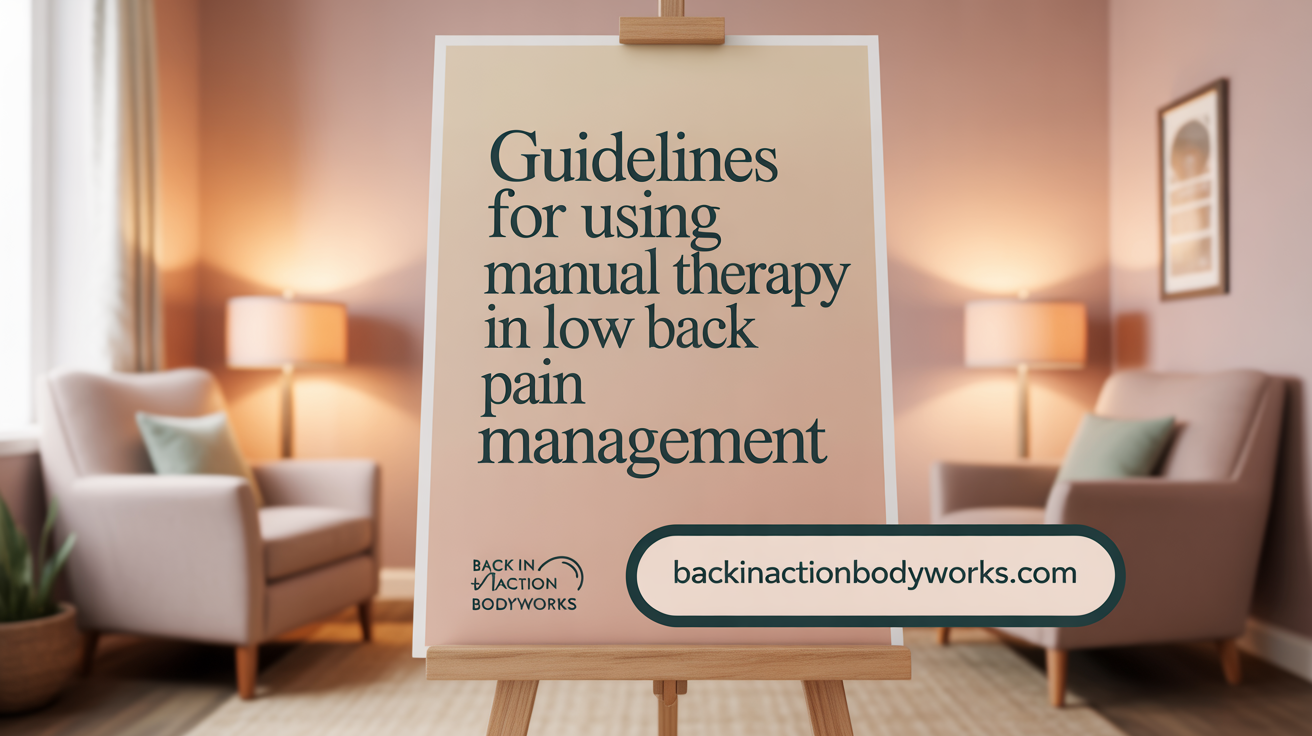
What are the current guidelines and recommendations for using manual therapy in low back pain management?
In the United States, clinical practice guidelines advocate for a multimodal approach to managing low back pain, emphasizing non-pharmacological strategies as first-line treatments. Among these, manual therapy (MT) emerges as a valuable intervention, incorporated alongside exercise, education, and psychosocial management.
Manual therapy includes techniques such as spinal manipulation, mobilization, soft tissue work, and neural mobilization. Evidence from systematic reviews and randomized controlled trials (RCTs) indicates that these techniques can provide short-term relief from pain and improve function, especially when combined with other treatments.
Guidelines endorse the use of manual therapy as an adjunct rather than a standalone solution. They recommend tailoring treatment plans to individual patient needs, considering factors like symptom severity, duration, and personal preferences.
Techniques such as spinal manipulation and mobilization have demonstrated comparable efficacy to sham treatments in acute low back pain and are beneficial as part of a comprehensive, patient-centered strategy.
The emphasis is placed on integrating manual therapy within a biopsychosocial framework that addresses not only biomechanical issues but also patient expectations, beliefs, and psychological factors.
Overall, current US guidelines support manual therapy as a safe and effective adjunct to active interventions, aiming to enhance patient outcomes, reduce reliance on medications, and facilitate quicker recovery. The focus remains on personalized care that emphasizes communication, shared decision-making, and addressing broader psychosocial influences.
Clinical Effectiveness of Manual Therapy for Low Back Pain
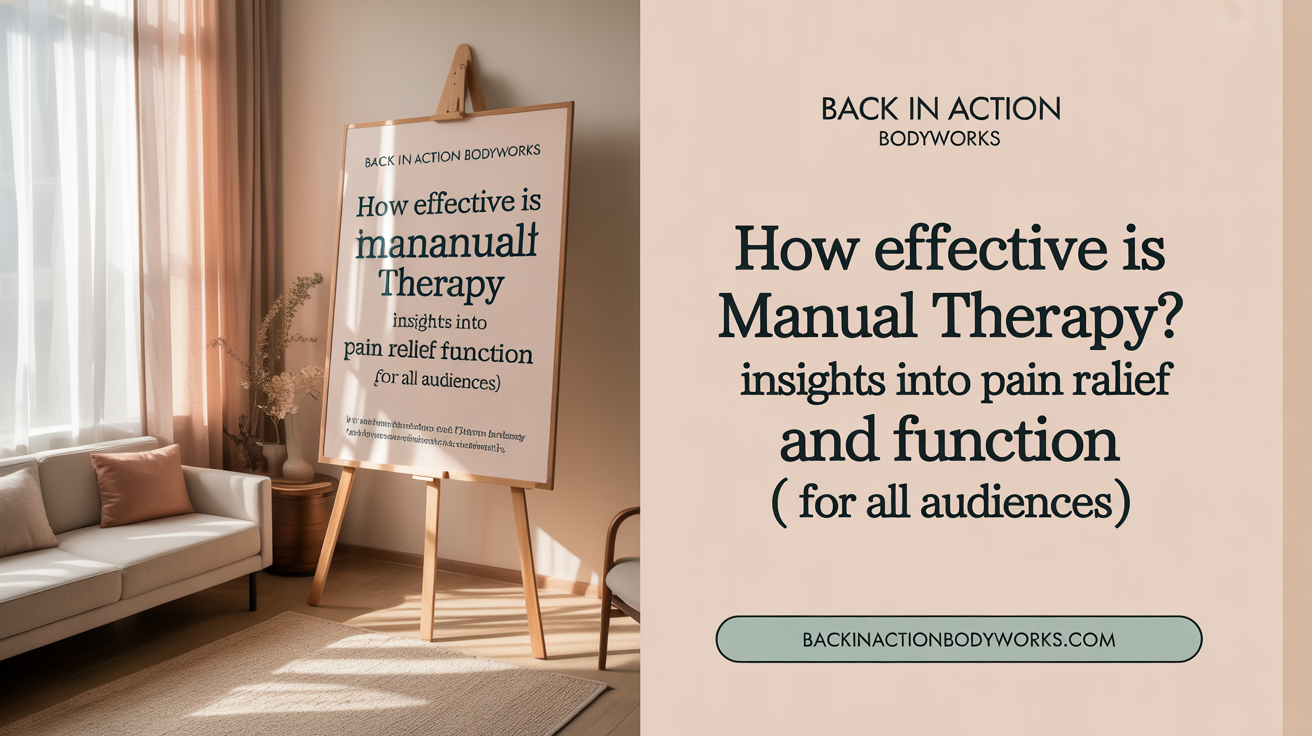
Is manual therapy effective for low back pain?
Research indicates that manual therapy (MT), including spinal manipulation and mobilization, can significantly reduce pain and improve function in patients with low back pain (LBP). After approximately 12 sessions, patients often report substantial relief. For instance, pain levels are reported to decrease by about 78%, with disability scores dropping by approximately 70%. This suggests that manual therapy offers meaningful clinical benefits for individuals suffering from both acute and chronic LBP.
Pain reduction statistics
Systematic reviews and randomized controlled trials (RCTs) consistently highlight the short-term effectiveness of manual therapy. In acute low back pain (ALBP), MT produces similar pain relief levels compared to sham treatments or no intervention, but patients often experience quick benefits. For chronic low back pain (CLBP), moderate-quality evidence shows that spinal manipulative therapy (SMT) results in pain reductions comparable to other recommended treatments.
Disability improvement after treatment
Patients undergoing manual therapy report notable improvements in disability caused by LBP. Studies demonstrate a 70% decrease in disability scores following a course of manual therapy, emphasizing its potential to restore function and daily activity levels.
Short and long-term effectiveness
While manual therapy provides immediate symptom relief, evidence also suggests benefits persist over time. Short-term pain relief is often complemented by sustained functional gains, especially when manual therapy is part of a comprehensive, patient-centered approach. These outcomes are supported by American research, which confirms that SMT can deliver comparable long-term outcomes as other standard treatments.
Additional considerations
It is important to note that the effectiveness of manual therapy depends heavily on delivery within a biopsychosocial framework, where communication, patient expectations, and psychosocial factors are addressed. Safety is generally high, with mostly mild and transient adverse events such as soreness or tiredness.
| Aspect | Effectiveness | Comments |
|---|---|---|
| Pain Relief | 78% reduction in pain | Significant short-term benefit |
| Disability | 70% reduction in disability | Enhances functional capacity |
| Long-Term Benefits | Sustained relief | Especially with comprehensive care |
Overall, manual therapy emerges as a valuable component in managing low back pain, aligning with clinical guidelines that recommend non-pharmacological interventions as first-line treatments.
Evidence Base Supporting Manual Therapy for Low Back Pain

Are there robust research findings supporting manual therapy (MT) in treating low back pain (LBP)?
Research including randomized controlled trials (RCTs) and systematic reviews indicates that manual therapy offers comparable short-term benefits to sham treatments or no intervention for acute low back pain. In chronic cases, MT—particularly spinal manipulative therapy (SMT)—has demonstrated similar effectiveness to other treatments in both short and long-term follow-ups. Meta-analyses reveal that SMT can lead to significant pain reduction, with some interventions producing a 10-point increase in pain relief scores on visual analog scales.
Multiple high-quality studies conducted in the United States, at institutions like Ohio University and Virginia Commonwealth University, support these findings. For example, systematic reviews of 64 RCTs involving adult chronic LBP patients show that SMT and mobilization produce meaningful reductions in pain and improvements in function over durations extending from immediate to several months.
However, some studies highlight limitations, such as variability in patient responses, differences in treatment techniques, and the challenge of creating indistinguishable sham procedures. Despite these limitations, the overall evidence suggests that manual therapy, when applied skillfully within a comprehensive treatment plan, can be an effective and safe option.
Can manual therapy aid in symptom management and encourage exercise participation?
Manual therapy facilitates immediate improvements in pain and disability, which can motivate patients to engage more actively in exercise and self-management strategies. Clinicians emphasize the importance of early contact with physiotherapy, including MT, to reduce healthcare costs, medication use, and unnecessary imaging. Patient perceptions are improved when care involves clear communication, reassurance, and involvement in decision-making, which enhances treatment satisfaction and adherence.
Moreover, understanding and aligning patient expectations—based on beliefs about spinal misalignment or nerve release—can optimize the therapeutic relationship and outcomes. The biopsychosocial approach underscores that mechanisms of MT involve neurophysiological effects and contextual factors like patient expectations and social influences, which all contribute to better management of chronic symptoms.
Is manual therapy a safe and cost-effective approach?
Manual therapy in the US is generally safe, with most adverse events being mild or transient, such as soreness or tiredness. Serious adverse events are exceedingly rare, and some studies report no increased risk compared to sham treatments. From an economic perspective, manual therapy is a significant component of the US healthcare expenditure on back pain, costing over $3.9 billion annually.
Incorporating manual therapy early in treatment aligns with efforts to lower healthcare costs and reduce reliance on opioids. Its safety profile, combined with evidence supporting functional benefits, makes MT a cost-effective adjunct when integrated into a patient-centered, multimodal care plan.
| Aspect | Evidence Summary | Additional Details |
|---|---|---|
| Effectiveness | Short-term pain relief comparable to sham | Based on 64 RCTs, meta-analyses |
| Safety | Mostly minor, transient adverse events | Serious events are rare |
| Cost | Over $3.9 billion annually in US | Supports early, integrated use |
| Patient Perception | High trust and expectation | Influenced by communication and beliefs |
Overall, manual therapy is supported by scientific evidence as a safe, cost-efficient, and effective approach to managing low back pain, especially when used as part of a comprehensive and individualized treatment plan.
Neurophysiological Mechanisms Underlying Manual Therapy
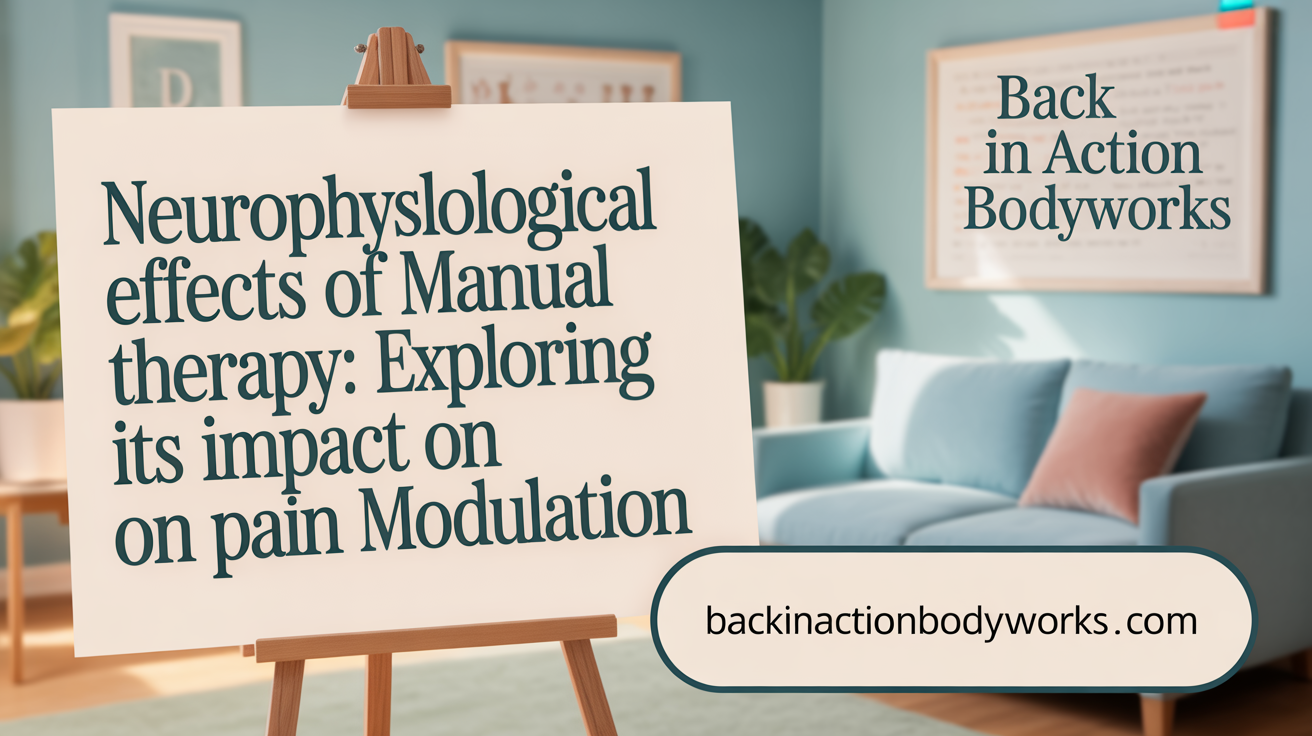
What are the neurophysiological effects of manual therapy?
Manual therapy (MT) influences the nervous system at multiple levels, involving peripheral, spinal, and brain-based mechanisms. These effects work together to alter how pain is perceived and processed.
At the peripheral level, MT can affect local tissues, reducing inflammation and modulating biochemical signals. It lowers inflammatory cytokines, which are chemicals involved in pain and swelling. Biochemically, MT increases the release of natural pain relievers such as β-endorphins, serotonin, and cannabinoids, helping to diminish pain sensations.
Spinally, MT can decrease the excitability of nerve pathways transmitting pain signals. It reduces spinal reflex activity related to nociception (pain sensation), which may alleviate persistent pain. By dampening these spinal responses, manual therapy contributes to easing discomfort.
On a higher, supraspinal level, MT influences brain activity. Neuroimaging studies have shown changes in areas like the insular cortex and anterior cingulate cortex—regions deeply involved in experiencing and regulating pain. These brain regions process how we perceive pain and can be modulated to reduce pain severity.
Additionally, MT affects the brain’s descending pain inhibitory pathways, which are responsible for suppressing pain signals before they reach conscious awareness. By activating these pathways, manual therapy enhances the body’s natural ability to control pain.
Overall, these neurophysiological responses explain why patients often report quick symptom relief and improved functional ability after manual therapy. The combined peripheral, spinal, and central effects underscore the importance of viewing MT as a biopsychosocial intervention that modulates the nervous system in a holistic manner.
Comparative Effectiveness of Manipulation Versus Mobilization
How do different manual therapy methods compare in terms of research-supported effectiveness for low back pain?
Research comparing manipulation and mobilization, two common manual therapy techniques, shows that their effectiveness can be similar, especially in the treatment of low back pain (LBP). Meta-analyses of randomized controlled trials (RCTs) indicate that both methods are beneficial for reducing pain and improving function, with some studies suggesting manipulation may offer superior short-term pain relief.
Manipulation, often involving thrust techniques, tends to produce a more immediate reduction in pain scores, such as on the Visual Analog Scale, often exceeding 10 points compared to sham treatments. This approach might be preferred when rapid symptom relief is desired. Mobilization, on the other hand, involves slower, passive movements within the patient's range of motion and is generally considered safer, especially for populations at risk of adverse effects.
In terms of safety profiles, most adverse events linked to both manipulation and mobilization are mild to moderate, transient, and musculoskeletal in nature. Serious adverse events are rare, and some studies report no increased risks when compared with sham interventions.
Recent trials, including those from American populations, support combining manual therapies with exercise for better outcomes, particularly for conditions like lumbar spinal stenosis and chronic LBP. The integration of patient-centered approaches, emphasizing expectations and psychosocial factors, tends to enhance treatment satisfaction and effectiveness.
A systematic review that included over 60 RCTs found that manipulation resulted in significantly larger short-term pain reductions compared to mobilization, especially where thrust was applied. Longer-term benefits, however, appear comparable between the two techniques.
Overall, the choice between manipulation and mobilization can be guided by individual patient factors, preferences, and safety considerations, with both remaining viable options within a multimodal treatment plan.
| Technique | Main Benefits | Safety Profile | Typical Duration of Effect |
|---|---|---|---|
| Spinal Manipulation | Faster pain relief, greater immediate improvement | Mild, transient, rare serious adverse events | Short-term, with some sustained benefits |
| Spinal Mobilization | Safer for at-risk populations, gradual improvement | Mild, mostly musculoskeletal | Similar to manipulation, varies |
These findings underscore the importance of tailoring manual therapy choices to individual patient needs while considering the evidence for efficacy and safety.
Clinical Outcomes and Safety of Manual Therapy Techniques
What are the safety and clinical outcomes associated with manual therapy techniques like manipulation and mobilization?
Manual therapy methods such as spinal manipulation and mobilization are widely used for low back pain (LBP) in the United States. Numerous studies, including systematic reviews and randomized controlled trials, have shown that these techniques can effectively reduce pain and improve functional ability, especially in patients with acute or chronic LBP.
In adults with chronic LBP, evidence suggests that spinal manipulative therapy (SMT) provides similar short- and long-term pain relief as other recommended treatments. Short-term benefits are especially notable when SMT is used as an adjunct to other therapies. For example, manipulation often results in a larger reduction in pain scores compared to mobilization or sham treatments.
The positive effects extend to various age groups, including older adults, with research showing modest to moderate improvements in pain and function. Patients often report high satisfaction levels, and immediate re-evaluation after sessions indicates perceived improvements.
Regarding safety, manual therapies are generally considered safe when performed by trained practitioners. The majority of adverse events are minor, transient, and musculoskeletal, such as temporary soreness or tiredness. Serious adverse effects are rare, and some studies have found no increased risk compared to sham procedures. A review of multiple trials confirmed that adverse events linked to SMT are mostly mild and of short duration.
While the evidence supports their use, the clinical significance of the benefits is often modest, and some heterogeneity exists among study results depending on treatment techniques and patient characteristics. Nonetheless, manual therapy remains a safe option for managing LBP, especially when integrated into comprehensive, patient-centered care plans.
Overall, manual therapy techniques like manipulation and mobilization offer promising safety profiles and beneficial outcomes for many patients. However, further high-quality research is necessary to bolster clinical guidelines and optimize treatment protocols for diverse patient populations.
Patient Attitudes and Beliefs About Manual Therapy in America
How do perceptions and attitudes toward manual therapies for low back pain vary among American patients and practitioners?
In the United States, both patients and healthcare providers generally view manual therapy (MT), including spinal manipulation and mobilization, as a safe and effective treatment for low back pain (LBP). Patients often believe in a biomedical mechanism—such as realigning the spine or releasing nerves—that explains how MT alleviates pain. This belief fosters confidence in manual therapies and makes patients more willing to accept some discomfort, like post-treatment soreness, as an acceptable part of the healing process.
Patients’ expectations are influenced by their understanding of pain, personal experiences, and social interactions. Many expect manual therapy to deliver quick relief and to address structural issues, which aligns with their beliefs about biomechanical correction. They highly value the trustworthiness, empathy, and communication skills of their therapists, considering these as crucial factors that influence treatment satisfaction and perceptions.
Practitioners and primary care physicians also generally support the use of manual therapies. Many recognize it as a safe alternative to medications like opioids and value its role in early intervention, which can reduce healthcare costs and unnecessary imaging. However, some providers express skepticism due to the variable quality of available evidence and limited formal training in manual techniques. Despite this, there is a keen interest among healthcare professionals in further education to better understand and communicate the benefits and risks.
While the majority of patients and practitioners hold favorable views, some skepticism remains. Concerns include safety risks—particularly with thrust techniques—and doubts about the robustness of scientific evidence. To improve perceptions, emphasis on shared decision-making, clear communication, and addressing psychosocial factors is recommended. Such efforts help ensure that attitudes toward manual therapy continue to be positive and grounded in validated clinical practice.
In summary, the prevailing attitude in America favors manual therapies for LBP, supported by beliefs in its biological plausibility and safety. Enhancing understanding among both patients and providers through education and evidence-based research can further align perceptions with current scientific insights, ultimately improving treatment outcomes.
Placebo and Sham Control Challenges in Manual Therapy Research
What does research say about sham treatments and placebo effects in manual therapy studies for low back pain?
Research exploring sham treatments in manual therapy for low back pain (LBP) highlights the significant role of placebo effects, which are influenced by patient expectations, the therapeutic environment, and neurophysiological responses. These effects can sometimes lead patients to perceive improvements that are not directly attributable to the specific biomechanical or physiological mechanisms of the intervention.
Several systematic reviews and randomized controlled trials (RCTs) reveal that manual therapies such as spinal manipulation and mobilization often show comparable short-term pain relief to sham treatments or no intervention. For instance, studies indicate that participants’ beliefs about treatment efficacy and the contextual factors surrounding therapy can contribute to perceived benefits, complicating the ability to distinguish between true physiological effects and placebo responses.
Designing effective sham treatments in this context presents major challenges. An ideal sham should be inert, indistinguishable from active therapy, and capable of maintaining patient blinding. However, many existing sham procedures are either too transparent—allowing patients to identify them as placebo—or inadvertently produce physiological effects, which diminishes their validity. This heterogeneity in sham design leads to inconsistent trial outcomes and complicates the interpretation of results.
Moreover, some high-quality research reports that sham treatments are often recognized by patients, with detection rates ranging from 46.7% to 83.5%, especially for techniques like spinal manipulation. Such awareness can enhance expectancy effects, further muddying the waters when assessing true treatment efficacy.
Overall, evidence suggests that the apparent benefits of manual therapy over sham interventions are typically small and sometimes not clinically significant. For example, meta-analyses document that differences in pain reduction between real and sham therapies often fall below thresholds considered meaningful in clinical practice.
This underscores a critical point: a substantial portion of the observed effects in manual therapy studies may be due to placebo mechanisms rather than specific biomechanical changes. Consequently, understanding and controlling for placebo and expectation effects are essential for accurately evaluating manual therapy’s role in managing low back pain.
By improving the design of sham controls and measuring patient expectations more systematically, future research can enhance the reliability of findings. Recognizing the influence of placebo effects is vital for clinicians to interpret research outcomes correctly and to optimize patient communication and treatment strategies.
The Biopsychosocial Framework in Manual Therapy for Back Pain
How do psychological, social, and physiological factors interact in manual therapy for back pain?
Manual therapy for low back pain (LBP) is increasingly understood to work through a complex interplay of neurophysiological effects and psychosocial influences. Rather than focusing solely on biomechanical corrections, clinicians recognize that factors such as a patient's beliefs, expectations, and social context can significantly impact treatment outcomes.
Psychologically, a patient's understanding of pain, anxiety levels, and prior experiences can shape their response to therapy. Social factors like support networks and social interactions influence health perceptions and healing expectations. Physiological factors include neurophysiological mechanisms such as changes in pain signaling pathways and contextual effects like the therapeutic environment.
This biopsychosocial approach underscores that effective manual therapy depends not only on physical interventions but also on addressing the broader context of the patient’s life and mindset.
Why is patient-centered care in manual therapy so important?
Research shows that early contact with physiotherapy, including manual therapy, reduces healthcare costs, opioid prescriptions, and unnecessary imaging. Central to this success is patient-centered care, which involves tailored communication, shared decision-making, and addressing individual expectations.
When therapists listen actively and provide clear information, patients tend to feel more satisfied with their treatment, have greater confidence, and perceive improvements. This personalized approach also helps align treatment goals with patient values, fostering better adherence and outcomes.
What role do patient expectations and the therapeutic relationship play?
Patients often believe that manual therapy works through biomechanical mechanisms, such as realigning the spine or releasing nerves. Their expectations about treatment efficacy are influenced by social and personal experiences, which can enhance perceived benefits when managed effectively.
Trustworthiness, empathy, and good communication skills of the therapist are critical. When patients feel understood and confident in their therapist, they are more likely to accept some discomfort or risks related to manual techniques, like post-treatment soreness.
Moreover, positive expectations can produce placebo-like effects that contribute to pain relief and functional improvement, reinforcing the importance of a strong, supportive therapeutic relationship within a biopsychosocial framework.
Integration of Manual Therapy with Active Interventions
How is manual therapy integrated with exercise and education?
Manual therapy (MT) is often combined with other active interventions like exercise, education, and lifestyle modifications as part of a comprehensive treatment plan for low back pain (LBP). In clinical practice, therapists emphasize clear communication and shared decision-making to align treatments with patient expectations. This approach helps foster better understanding and adherence, especially as patients often hold beliefs about spinal misalignment and nerve release mechanisms.
What benefits does manual therapy offer for function and pain management?
Research indicates that manual therapy, including spinal manipulation and mobilization, can produce significant reductions in pain and improvements in function, particularly in chronic low back pain. Meta-analyses reveal that manipulation often results in larger pain relief compared to other active treatments or sham therapies. For example, thrust manipulation may result in a 10.75-point greater reduction on pain scales. These benefits tend to be observed in both short-term and long-term scenarios, with some effects on disability. Furthermore, the immediate re-evaluation after treatment underscores the perceived value of MT among patients.
How does manual therapy contribute to reducing opioid dependency and unnecessary imaging?
Early contact with physiotherapy, which frequently includes manual therapy, has been associated with a decrease in healthcare costs, opioid prescriptions, and reliance on unnecessary imaging in the US. Although more prospective data are needed, these trends suggest that integrating MT into initial care may help mitigate some of the overuse of pharmacological and radiological resources. Given that most adverse events are mild or moderate, manual therapy presents as a relatively safe alternative to opioids when incorporated into a patient-centered care plan.
Manual therapy's benefit is maximized when it is part of a broader, biopsychosocial approach that addresses psychosocial factors such as fear avoidance and catastrophizing. Incorporating education, reassurance, and communication enhances treatment outcomes and fosters patient trust. Consequently, combining manual therapy with active management strategies can not only improve pain and function but also contribute to a more sustainable and cost-effective approach to LBP care in the US.
| Aspect | Evidence and Impact | Additional Notes |
|---|---|---|
| Effectiveness in pain relief | Comparable to sham in acute, superior in chronic cases | Especially with manipulation, short-term benefits |
| Functional improvements | Small but significant improvements, especially with thrust | Variability based on techniques and duration |
| Safety | Mostly mild adverse events, rare serious risks | Proper screening minimizes risks |
| Cost implications | Potential reductions in healthcare costs and opioid use | Early physiotherapy contact is beneficial |
| Patient perceptions | Influence treatment adherence and satisfaction | Expectations shaped by social and educational context |
Research Trends and Key American Studies on Manual Therapy
What are the recent research trends, key studies, and developments in manual therapies for low back pain in the United States?
Recent investigations in the US mainly emphasize high-quality research methods such as randomized controlled trials (RCTs) and systematic reviews. These studies explore how manual therapies—like spinal manipulation, mobilization, massage, and muscle energy techniques—work to alleviate low back pain (LBP) and improve patient function.
A prominent focus is on defining the effectiveness of manual therapy as part of a comprehensive treatment plan. Many well-structured RCTs and systematic reviews compare manual therapy’s short-term benefits with sham treatments and other interventions. Evidence consistently shows that spinal manipulative therapy (SMT) and mobilization can effectively reduce pain and enhance function, especially in acute and chronic LBP cases. For example, meta-analyses report that manipulation may outperform mobilization and produce a clinically meaningful reduction in pain, particularly in short-term outcomes.
The US research landscape is also marked by bibliometric analyses that examine the volume, trends, and collaborative patterns within the field. These analyses highlight the US’s leading role in producing clinical evidence and developing consensus guidelines that integrate manual therapies, underscoring their value in routine practice.
Furthermore, there is a shift toward understanding the neurophysiological effects of manual therapies. Instead of focusing solely on biomechanical corrections, current research recognizes the importance of neurophysiological mechanisms and biopsychosocial factors. This includes patient expectations, prior experiences, beliefs about treatment, and the therapeutic alliance—all of which influence treatment outcomes.
Innovations include exploring dose-response relationships in spinal manipulation and assessing the long-term benefits of multimodal approaches that combine manual therapy with exercise, education, and psychosocial support. Such strategies aim to tailor treatments to individual patient profiles, enhancing efficacy.
An emerging trend involves integrating behavioral therapies and patient self-management initiatives with manual therapy. This combination seeks not only to reduce pain but also to empower patients and address underlying psychosocial contributors to chronic LBP.
Overall, these developments in American research are aligned with clinical guidelines recommending manual therapy as a safe, effective, and patient-centered modality. The focus on advancing understanding of its mechanisms, optimizing treatment protocols, and emphasizing personalized care continues to shape the future of low back pain management in the US.
Manual Therapy Utilization Patterns in the United States
How prevalent is manual therapy use among adults?
In the United States, manual therapy remains a popular choice for managing low back pain and other musculoskeletal conditions. Each year, over 18 million adults seek treatments such as spinal mobilization and manipulation.
Which professions deliver manual therapy?
Several healthcare professionals are trained to provide manual therapies, including osteopaths, chiropractors, massage therapists, physiotherapists, and physical therapists. These practitioners incorporate techniques like thrust manipulations and mobilizations into their treatment plans.
What are patient expectations regarding manual therapy?
Patients generally expect manual therapy to be part of their treatment when they visit these practitioners. About 97.5% of osteopathic patients anticipate manual modalities to be involved in their care.
How do patients perceive the effectiveness and safety of manual therapy?
Patients tend to believe that manual therapy works through biomechanical mechanisms, such as realigning the spine or releasing nerves. Many perceive it as a safe and biologically plausible treatment, which contributes to their willingness to accept some discomfort, like post-treatment soreness.
Additional insights
Patients' attitudes are also influenced by their understanding of pain, personal experiences, and social interactions. They value the trustworthiness and communication skills of their therapists, which significantly impact treatment satisfaction. Overall, manual therapy's role in US healthcare is supported by its widespread use, patient preference, and evidence of safety and moderate effectiveness.
Manual Therapy’s Role as a Safe Alternative to Opioids
Opioid Crisis Context
The United States continues to grapple with a significant opioid crisis, which has led to increased scrutiny of pain management strategies. Many patients with low back pain (LBP) are over-reliant on opioid medications, risking dependence, side effects, and overdose. As a consequence, healthcare guidelines now emphasize non-pharmacological therapies as first-line treatments for LBP, aiming to address pain effectively while minimizing medication use.
Safety Profile of Manual Therapy
Manual therapy, including spinal and peripheral manipulative techniques, is generally considered safe when performed by trained professionals such as physiotherapists, chiropractors, or osteopaths. Most adverse events tend to be minor and transient, such as temporary soreness or tiredness, with serious adverse effects being rare. In fact, systematic reviews and clinical studies show that adverse events are similar between manual therapy and placebo treatments, confirming its safety profile.
Potential to Reduce Pharmacologic Intervention
Including manual therapy in treatment plans for low back pain has been linked to a reduction in healthcare costs, opioid prescriptions, and unnecessary diagnostic imaging. Early intervention with manual therapy and physiotherapy may prevent the progression to chronic pain and decrease the reliance on opioids. Patients often report perceived improvements and satisfaction with manual therapy, especially when communication, expectations, and psychosocial factors are well-managed.
Overall, manual therapy presents a promising, low-risk option for pain relief in LBP management, aligning with efforts to combat opioid misuse and promoting a holistic, biopsychosocial approach. Incorporating manual therapy into multimodal treatment strategies can help reduce dependence on medications while ensuring patient safety and satisfaction.
Adverse Events Reporting and Safety Monitoring in Manual Therapy Research
Incidence and types of adverse events
Manual therapy (MT), including spinal manipulation and mobilization, is generally considered safe for treating low back pain (LBP). Most reported adverse events tend to be mild or moderate and often include temporary soreness, fatigue, or a transient worsening of symptoms. Serious adverse events are rare, which supports the safety profile of MT. In some studies, no increased risk of adverse effects was found when comparing manipulative therapies with sham treatments.
Challenges in standardization of safety data
One significant obstacle in assessing the safety of manual therapies is the inconsistency in adverse event reporting across studies. Many trials lack systematic registration or detailed assessment of adverse events, which hampers accurate estimation of incidence rates. Variability in definitions and severity grading further complicates comparisons. Consequently, while most evidence points to MT as a safe option, uncertainty remains due to these data inconsistencies.
Comparison with sham treatments
Research indicates that adverse events occur at similar rates in both active manual therapy groups and sham treatments. Studies often report comparable frequencies and types of mild side effects, which suggests that some adverse events may be attributable to the psychological or placebo aspects of treatment. High-quality trials with well-designed sham procedures are essential to distinguish true treatment-related risks from placebo or nocebo responses.
Table 1 summarizes findings related to adverse events in manual therapy research:
| Aspect | Findings | Additional Details |
|---|---|---|
| Incidence | Generally low for serious effects | Mostly transient soreness, tiredness |
| Severity | Mild/moderate | No significant difference with sham |
| Reporting Challenges | Inconsistent data | Variability in definitions and assessments |
| Comparison | Similar in active and sham groups | Supports safety but calls for better reporting |
Overall, while manual therapy remains a safe intervention for LBP, improving safety monitoring and reporting standards is vital for ensuring patient safety and enhancing clinical decision-making.
Patient Experience During and After Manual Therapy
What are common side effects like post-treatment soreness?
Many patients undergoing manual therapy for low back pain report experiencing temporary soreness or mild discomfort following treatment. These sensations are generally short-lived and considered normal by practitioners, often reflecting the physical effects of techniques such as spinal manipulation or mobilization. Most patients view mild soreness as an acceptable part of the therapy process, associating it with potential benefits.
How acceptable and tolerable is manual therapy for patients?
Overall, manual therapy is well-received by patients, with high levels of acceptability. Patients tend to trust skilled practitioners and appreciate the thorough communication about what to expect during and after the procedures. Their beliefs about the safety and mechanism of action influence their willingness to tolerate some discomfort, such as soreness, if they believe the benefits outweigh the temporary discomfort.
How does patient perception influence engagement and adherence?
Patients' perceptions, shaped by their prior experiences and understanding of their condition, significantly affect their engagement. Clear, reassuring communication and education from therapists enhance their confidence in the treatment. Patients who understand that mild soreness is typical often feel more comfortable continuing therapy sessions, which can lead to better treatment adherence and improved outcomes.
Studies show that positive interactions with therapists — including trustworthiness, empathy, and effective communication — boost patient satisfaction and their overall engagement with manual therapy. This connection emphasizes the importance of a patient-centered approach, where managing expectations and addressing concerns are integral to successful treatment experiences.
Manual Therapy Compared to Other Treatment Modalities
How does manual therapy compare to exercise therapy and physical therapy?
Research indicates that manual therapy, including spinal manipulation and mobilization, produces significant pain reduction and functional improvement in adults with chronic low back pain. Meta-analyses show that these therapies often outperform active comparators such as exercise or general physical therapy, with manipulations leading to larger decreases in pain scores and better functional outcomes.
Specifically, thrust manipulation—a common manual therapy technique—has been associated with approximately 10.75 points greater reduction on Visual Analog Scale (VAS) pain scores than other standard treatments. Moreover, manual therapies are widely accepted and expected by patients, with approximately 97.5% of osteopathic patients anticipating manual therapy as part of their treatment, highlighting their role within US healthcare.
How do outcomes of manual therapy compare with pharmacological treatments?
Manual therapy is generally regarded as a safe and effective alternative to opioids and other medications for low back pain. Studies show that manual therapy can provide comparable short- and long-term pain relief and functional improvements without the associated risks of medication adverse effects.
While medications like NSAIDs and opioids can offer symptom relief, they carry risks such as dependency and side effects. Manual therapy, on the other hand, offers minimal safety concerns with mostly mild adverse events like temporary soreness or tiredness. This makes it a preferred initial treatment in clinical guidelines for nonspecific musculoskeletal pain in the US.
Are there benefits to combining manual therapy with other treatments?
Combining manual therapy with other modalities often results in enhanced benefits. When used as an adjuvant to exercise or education, manual therapy can provide additional short-term pain relief and functional gains. This integrated approach aligns with a biopsychosocial model, addressing not only physical but also psychological and social factors influencing low back pain.
Current guidelines emphasize the importance of shared decision-making and addressing psychosocial elements. The use of manual therapy within a multimodal treatment plan, complemented by education and behavioral strategies, can optimize patient outcomes. Consistent communication and aligning patient expectations further improve satisfaction and treatment efficacy.
| Treatment Modality | Effectiveness in LBP | Additional Benefits | Notes |
|---|---|---|---|
| Manual Therapy | Significant short-term pain relief, improved function | Safe, well-tolerated, minimal adverse events | Compared favorably with exercise and no treatment |
| Exercise Therapy | Effective, especially long-term | Promotes overall mobility and strength | Often used with manual therapy for best results |
| Pharmacological Treatments | Symptom relief, risk of side effects | Dependence, systemic side effects | Manual therapy offers a safer alternative |
| Combination Therapy | Enhanced outcomes | Addresses biopsychosocial factors | Recommended in guidelines for complex cases |
Manual Therapy for Acute Versus Chronic Low Back Pain
Different efficacy profiles
Manual therapy, including spinal manipulation and mobilization, exhibits varying effectiveness in treating acute and chronic low back pain (LBP). For acute low back pain (ALBP), evidence shows that manual therapy can provide short-term pain relief comparable to sham treatments or no intervention. In contrast, for chronic low back pain (CLBP), studies suggest that spinal manipulative therapy (SMT) may produce similar long-term pain management outcomes as other active therapies or sham interventions.
In terms of function improvement, both acute and chronic cases show modest benefits, with some research indicating slight superiority for manipulation techniques, especially when used as an adjunct. Overall, while manual therapy effectively reduces pain in the short and long term, its specific impacts vary based on the duration of the pain and the individual patient's condition.
Duration of pain and treatment responsiveness
Patients with ALBP typically experience rapid improvements following manual therapy, often perceiving immediate relief after initial sessions. However, persistent or recurrent pain remains a challenge, especially in cases of CLBP, which often lasts for years, with an estimated point prevalence of nearly 20% among American adults aged 20-59.
For long-term management of CLBP, manual therapies are generally considered safe and valuable components of multimodal treatment approaches. Despite the benefits, the response to therapy may depend on psychosocial factors such as patients' beliefs, expectations, and prior experiences. For example, those who understand and trust the treatment process tend to report higher satisfaction and perceived outcomes.
Management challenges and expectations
Managing patient expectations is crucial, as many individuals believe manual therapy works through biomechanical mechanisms like realigning the spine or releasing nerves. These beliefs influence their willingness to endure some discomfort, such as post-treatment soreness, which is common but considered acceptable.
Effective communication and shared decision-making are essential to align treatment perceptions with realistic outcomes. Patients highly value trust, empathy, and clear explanations from their therapists, which can enhance satisfaction and adherence.
While manual therapy is generally safe, understanding its limitations and the biopsychosocial factors influencing pain remains critical. Addressing these elements can improve overall management strategies, especially for those dealing with persistent pain challenging to treat with mechanical interventions alone.
| Aspect | Acute Low Back Pain (ALBP) | Chronic Low Back Pain (CLBP) | Notes |
|---|---|---|---|
| Efficacy in pain relief | Short-term: comparable to sham/no intervention | Long-term: similar to other therapies | Manipulation may outperform mobilization in some cases |
| Functional improvements | Modest, immediate | Small, sustained | Enhanced when combined with patient education |
| Response influenced by | Rapid relief, expectations | Psychosocial factors, beliefs, prior experiences | Communication improves outcomes |
| Safety | Generally safe, minor soreness | Safe, rare serious events | Adverse effects usually mild |
| Key challenges | Managing expectations, addressing fear | Long-term management, psychological factors | Multimodal approach recommended |
Communication and Shared Decision-Making in Manual Therapy
Importance of clear language and patient education
Effective communication is a cornerstone of successful manual therapy for low back pain (LBP). Patients often seek not only relief but also understanding of their condition and treatment options. Using simple, straightforward language helps clarify concepts such as the mechanisms of manual therapy, which many patients believe to be biomechanical, like realigning the spine or releasing nerves.
Patient education about what manual therapy can and cannot do is crucial. When therapists explain that effects may involve neurophysiological and contextual factors rather than just mechanical corrections, patients develop a more realistic expectation of outcomes. This understanding supports adherence and reduces misconceptions about the therapy's purpose.
Influence on treatment satisfaction
Communication quality directly affects patients’ satisfaction and their attitudes towards manual therapy. Trustworthy, empathetic interactions, where therapists listen attentively and validate patient concerns, increase confidence in the treatment process.
Research indicates that patients value therapists' communication skills highly, often valuing the therapeutic relationship as much as the intervention itself. Properly addressing fears, especially related to thrust techniques or manipulation risks, and providing reassurance about safety, also positively influence their treatment experience.
Aligning expectations and clinical outcomes
Patients' beliefs about their back pain—such as believing their pain stems from a misaligned spine—shape their expectations and how they perceive treatment effectiveness. When therapists engage in transparent discussions, correcting misconceptions and aligning expectations, patient satisfaction and perceived outcomes improve.
Shared decision-making, involving patients actively in choosing their care plan, enhances engagement and commitment to treatment. For example, explaining the potential benefits and risks of manual therapy, and incorporating patient preferences, can lead to better pain management and functional improvements.
In summary, integrating clear communication, thorough patient education, and shared decision-making fosters trust, aligns treatment goals, and may improve clinical outcomes in managing low back pain with manual therapies.
Limitations and Gaps in Current Manual Therapy Research
Variability in study designs and sham controls
Current research on manual therapy (MT) for low back pain (LBP) in the US exhibits considerable variability in how studies are designed. Many trials use different types of manual techniques, such as spinal manipulation or mobilization, and compare them against various control interventions, including sham treatments or no treatment at all. This inconsistency makes it challenging to draw firm conclusions about the true efficacy of MT. For instance, several systematic reviews highlight that sham procedures often differ greatly from active treatments in appearance and patient perception, which can influence study outcomes.
Need for standardized protocols
Another significant gap is the lack of standardized treatment protocols. Manual therapy encompasses a range of techniques, but without uniform guidelines, their application varies widely across practitioners and studies. This variation affects the reliability and reproducibility of findings. Establishing clear, standardized procedures for parameters like force, duration, and frequency of MT would help in comparing outcomes across studies and integrating evidence into clinical practice.
Future research directions
Future research should focus on developing reliable sham controls that are indistinguishable from active treatments to improve blinding. Larger, well-designed randomized controlled trials with consistent protocols are essential to better understand the specific benefits and mechanisms of MT. Additionally, research should explore patient-centered outcomes, including psychosocial factors like expectations and beliefs, which significantly influence treatment satisfaction and perceived effectiveness.
By addressing these limitations, future studies can provide more definitive evidence on the role of manual therapies in managing low back pain, helping clinicians tailor treatments that are both effective and aligned with patient preferences.
| Aspect | Current State | Recommendations | Additional Notes |
|---|---|---|---|
| Study Design Variability | High | Standardize treatment protocols and control interventions | Improves comparability across studies |
| Sham Control Validity | Limited | Develop indistinguishable sham procedures | Ensures better patient blinding |
| Protocol Standardization | Absent | Create consensus guidelines for technique application | Enhances reproducibility |
| Research Focus | Short-term outcomes | Incorporate long-term follow-up | Measures durability of effects |
| Patient Factors | Underexplored | Include psychosocial assessments | Addresses biopsychosocial influences |
Manual Therapy and Psychosocial Factors Influencing Low Back Pain
How do fear avoidance, catastrophizing, and self-efficacy influence low back pain treatment?
Psychosocial factors play a crucial role in the management and outcomes of low back pain (LBP). Among these, fear avoidance — the fear of movement or re-injury — can lead patients to limit activity, potentially worsening pain and disability.
Catastrophizing, or an exaggerated negative mindset about pain and its implications, often heightens pain perception and discourages engagement with therapeutic activities. Conversely, self-efficacy, or a patient's belief in their ability to manage pain, can serve as a protective factor, motivating participation in treatment and promoting better outcomes.
Research indicates that these factors significantly influence how patients respond to manual therapy (MT) and other interventions.
What is the impact of psychosocial factors on the response to manual therapy?
Effective pain relief from manual therapy does not solely rely on mechanical adjustments but is also affected by patients’ expectations, beliefs, and emotional states. Patients who have positive expectations and higher self-efficacy tend to experience better outcomes.
On the other hand, high levels of fear avoidance and catastrophizing are associated with less favorable responses. These psychosocial barriers can diminish the benefits of MT by reducing patient engagement and adherence.
How can clinicians incorporate psychosocial interventions?
Given these insights, integrating psychosocial strategies within the scope of manual therapy is essential. Clinicians can employ communication techniques that address fears and beliefs, providing reassurance and education about the biopsychosocial nature of pain.
Shared decision-making and setting realistic, achievable goals foster a sense of control and confidence in patients. Additionally, tailored cognitive-behavioral interventions targeting catastrophizing and fear avoidance can augment physical modalities.
By acknowledging and addressing psychosocial factors, healthcare providers improve not only patient satisfaction but also the overall effectiveness of low back pain management.
| Aspect | Influence on Treatment | Suggested Interventions |
|---|---|---|
| Fear avoidance | May reduce activity levels, impair recovery | Education, graded exposure, reassurance |
| Catastrophizing | Increases pain perception, decreases engagement | Cognitive-behavioral therapy, counseling |
| Self-efficacy | Promotes active participation, improves outcomes | Goal setting, motivational interviewing |
In summary, the success of manual therapy in treating low back pain is amplified when psychosocial factors are actively managed. Incorporating communication, education, and behavioral strategies supports a holistic, patient-centered approach that addresses both the physical and psychological dimensions of pain.
Role of Manual Therapy in Multimodal Low Back Pain Management Strategies
How does manual therapy fit into coordinated care pathways?
Manual therapy (MT), including spinal manipulation and mobilization, is an integral part of comprehensive treatment plans for low back pain (LBP) in the US. Given that over 18 million adults receive such therapies annually, MT is recognized within multimodal management strategies. These pathways emphasize a combination of therapies tailored to individual patient needs, combining physical interventions like manual therapy with education and self-management.
Evidence supports the use of MT as an effective option alongside other modalities, contributing to pain relief and functional improvement. Importantly, early contact with physiotherapists and manual therapy providers can lower healthcare costs by reducing reliance on imaging and opioid prescriptions. Incorporating MT within care pathways aims to optimize recovery, reduce healthcare burdens, and support personalized treatment.
How is manual therapy integrated with behavioral and self-management approaches?
Patient beliefs and expectations heavily influence treatment outcomes. Many patients perceive MT as a biomechanical fix, believing it realigns the spine or releases nerves. Therapists often combine manual techniques with communication strategies that promote understanding of pain, fostering a biopsychosocial model of care.
Effective management involves addressing psychosocial factors such as fear avoidance, catastrophizing, and self-efficacy. Therapists are encouraged to use shared decision-making to align treatment goals with patient expectations, which can enhance satisfaction and adherence.
Integrating MT with behavioral approaches, such as cognitive-behavioral therapy (CBT) and education, supports a holistic approach. This integration helps reduce fear and improve patients’ confidence in their ability to manage pain, leading to better long-term outcomes.
What about enhancing long-term patient outcomes?
Manual therapy shows promise for producing short-term pain relief and improving function, especially when combined with other interventions. However, sustained benefits depend on comprehensive care that includes patient education and self-management strategies.
Research indicates that early intervention with physiotherapy, which often includes manual therapy, can lead to lower recurrence rates and better long-term health trajectories. Emphasizing communication, addressing psychosocial influences, and fostering active patient participation are crucial.
Overall, the goal is to use manual therapy as a component within a broader, patient-centered approach. This empowers patients to maintain improvements, reduces reliance on medications, and promotes lasting recovery.
| Aspect | Role | Additional Details |
|---|---|---|
| Care pathways | Incorporate MT as part of multimodal strategy | Enhances pain relief and function; reduces healthcare costs |
| Behavioral support | Combine MT with education & psychological approaches | Addresses psychosocial factors; improves adherence |
| Long-term outcomes | Focus on patient engagement & self-management | Sustains improvements; reduces recurrence |
Embracing these integrated strategies ensures manual therapy contributes effectively within the broader context of low back pain management in the US.
Effectiveness of Manual Therapy Across Different Patient Demographics
How does the effectiveness of manual therapy vary among different ages and considering comorbidities?
Manual therapy, including spinal manipulation and mobilization, is widely used among adults with low back pain (LBP) in the US, with estimates showing over 18 million receiving such treatment annually. Research indicates that these therapies can provide significant pain relief and functional improvement, especially in chronic cases lasting several years. For example, adults with long-term LBP have experienced positive outcomes with manipulation and mobilization.
However, when examining specific populations like children or older adults, the evidence becomes less conclusive. In children, trials are few and mostly inconclusive for conditions like otitis media or enuresis, while for older populations, studies have shown limited or no effect for certain conditions such as asthma or hypertension, emphasizing the need for age-specific research.
Patients with multiple health conditions or comorbidities often respond well to manual therapy, but safety and efficacy depend on tailored approaches. For instance, in patients with musculoskeletal issues, manual therapy is safe with mostly mild adverse events, but assessing individual health status remains crucial.
How is treatment personalized for individual patient needs?
Personalizing manual therapy involves understanding a patient’s unique beliefs about their condition, expectations, prior experiences, and social context. Effective communication and shared decision-making are vital, as they influence patient expectations and satisfaction.
Therapists often explain the mechanisms behind manual therapy, which patients frequently view as biomechanical realignment or nerve release, fostering trust and adherence. Moreover, treatment plans should consider psychosocial factors such as fear avoidance or catastrophizing, which can affect outcomes.
In chronic back pain, combining manual therapy with education about pain and psychosocial support shows improved results. Techniques like thrust manipulation may also provide additional benefits, such as reducing disability.
How do access and outcomes differ across populations?
Access to manual therapy is generally high among adults with back pain, yet disparities exist. Socioeconomic factors, geographic location, and insurance coverage impact who can receive these therapies. In the US, the high treatment costs (exceeding $3.9 billion annually) highlight economic barriers.
Efforts to improve equity include early contact with physiotherapists, which can reduce healthcare costs and minimize unnecessary imaging or opioid prescriptions. Nonetheless, gaps in coverage and awareness still limit effective treatment for some populations.
Overall, manual therapy offers beneficial effects for various demographic groups, but optimizing outcomes requires tailored, patient-centered care that considers age, health conditions, beliefs, and socioeconomic factors.
| Aspect | Details | Considerations |
|---|---|---|
| Age Groups | Adults (most studied), limited evidence for children and elderly | Safety and efficacy depend on age-specific factors; more research needed |
| Chronicity of Pain | Short and long-term benefits observed; more pronounced in short-term data | Long-term management may need combined approaches |
| Comorbidities | Generally safe with minor adverse events; tailored approaches necessary | Assess overall health status before intervention |
| Access & Outcomes | Socioeconomic and geographic disparities affect access; early intervention is beneficial | Addressing barriers can improve health equity |
Understanding how age, health status, and social factors influence manual therapy’s effectiveness helps in designing personalized treatment plans that maximize benefits across diverse US populations.
Manual Therapy Beyond Low Back Pain: Broader Musculoskeletal Applications
Cervical and thoracic pain treatments
Manual therapy (MT) is widely used beyond low back pain, notably for neck and thoracic region issues. Evidence shows that spinal manipulation or mobilization effectively alleviates acute and chronic neck pain, with combined approaches, such as cervical manipulation paired with exercise, proving beneficial for whiplash and neck disorders. Thoracic spinal treatments also help address acute and subacute neck pain, emphasizing the versatility of MT in managing upper back and neck conditions.
Other conditions like headaches and joint disorders
In addition to spinal issues, manual therapy has been demonstrated as effective for various other health problems. It can alleviate tension headaches and cervicogenic headaches, reducing pain and improving function. For joint-related conditions, MT provides relief for conditions such as knee and hip pain, with effects ranging from small to significant. Massage therapy, another form of manual treatment, has shown benefits for chronic low back and neck pain.
Scope of practice implications
In the United States, a broad range of health professionals, including chiropractors, osteopaths, massage therapists, and physiotherapists, employ manual therapy techniques. These diverse providers follow clinical guidelines recommending MT as part of multimodal treatment approaches. As research continues to support the safety and efficacy of MT across various conditions, scope of practice standards are evolving to encourage collaborative, patient-centered care. Ensuring practitioners are properly trained and communicate effectively with patients enhances outcomes and reinforces the safety profile of manual therapies.
| Condition | Effective Techniques | Evidence Summary | Additional Notes |
|---|---|---|---|
| Neck pain | Cervical manipulation, mobilization, exercise | Proven effective for acute and chronic cases | Often combined with other therapies |
| Headaches (tension, cervicogenic) | Spinal manipulation, massage | Significant pain reduction observed | Emphasizes holistic care |
| Shoulder and joint pain | Mobilization, soft tissue techniques | Relief reported, tailored to joint issues | Used in conjunction with rehabilitative exercises |
| Low back and recent onset | Lumbar manipulation, mobilization | Similar effectiveness to other conservative therapies | Usually integrated into broader treatment plans |
This expanded scope highlights manual therapy’s role as a versatile tool within musculoskeletal and neurological health, backed by growing scientific evidence, and its importance within comprehensive, patient-focused care in the US.
Summarizing the Role of Manual Therapies in American Back Pain Care
Manual therapies continue to be a widely utilized and researched treatment modality for low back pain in the United States. Substantial evidence supports their effectiveness in reducing pain and improving function, particularly when integrated as part of a multimodal, patient-centered care approach emphasizing biopsychosocial principles. While manual therapies are generally safe with mild transient adverse events, challenges remain in isolating their specific benefits beyond placebo effects due to research design limitations. Patient attitudes and expectations rooted in biomechanical beliefs contribute favorably to acceptance and satisfaction. Ongoing research aims to refine treatment protocols, improve sham designs, and advance personalized interventions with manual therapy at the core. Ultimately, manual therapies represent a valuable component within evidence-based management strategies to alleviate the substantial burden of back pain in America.
References
- A critical review of the role of manual therapy in the treatment of ...
- Influence of Active, Passive, and Manual Therapy Interventions for ...
- The attitudes and beliefs about manual therapy held by patients ...
- Benefits and harms of spinal manipulative therapy for the treatment ...
- Exploring expectations and perceptions of different manual therapy ...
- Manipulation and Mobilization for Treating Chronic Low Back Pain ...
- Effect of Spinal Manipulative and Mobilization Therapies in Young ...
Recent articles

Complementing Chiropractic Care with Physiotherapy: What You Need to Know
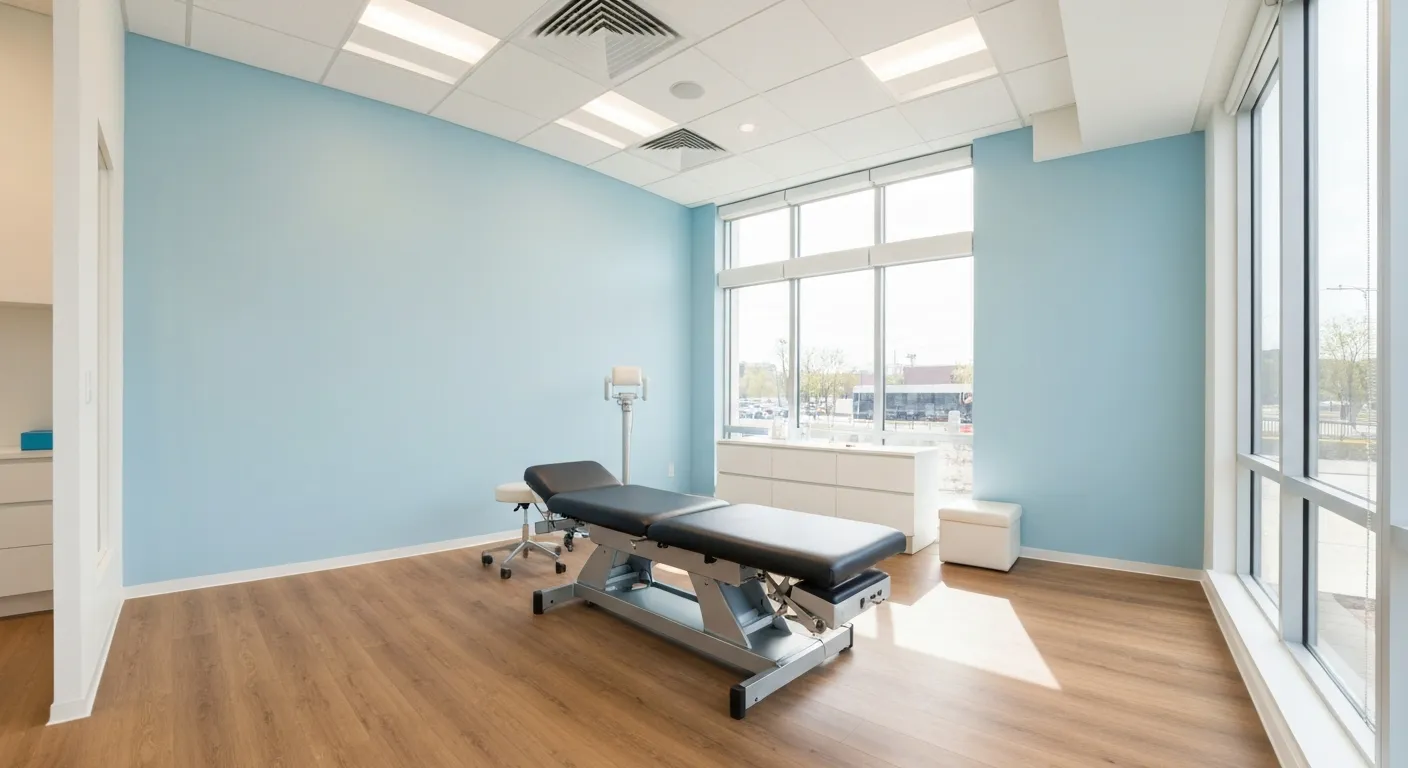
What to Expect During Your First Chiropractic Visit
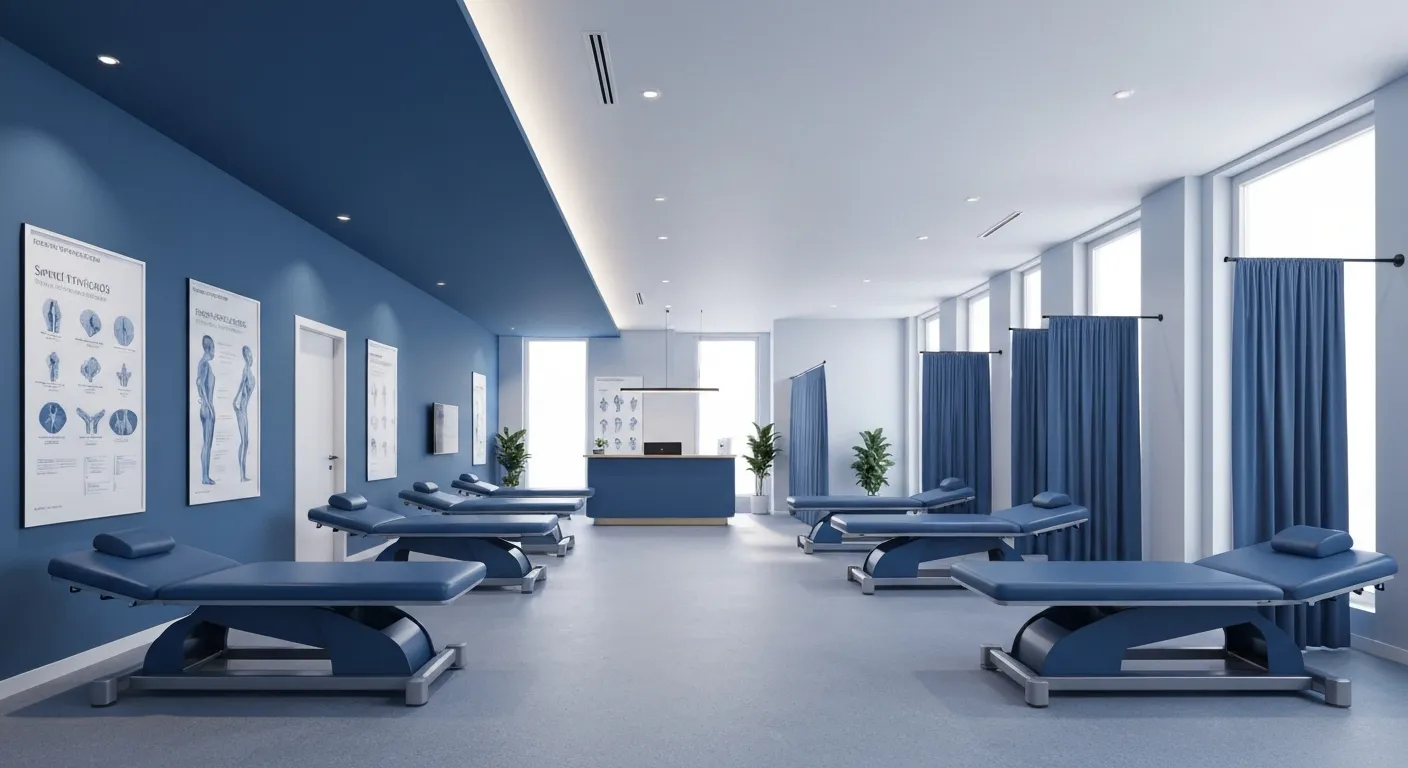
Simple Lifestyle Adjustments to Maintain a Healthy Spine

Personalized Nutritional Counseling for Improved Health Outcomes

Exploring Non-Surgical Treatments for Spine-Related Conditions
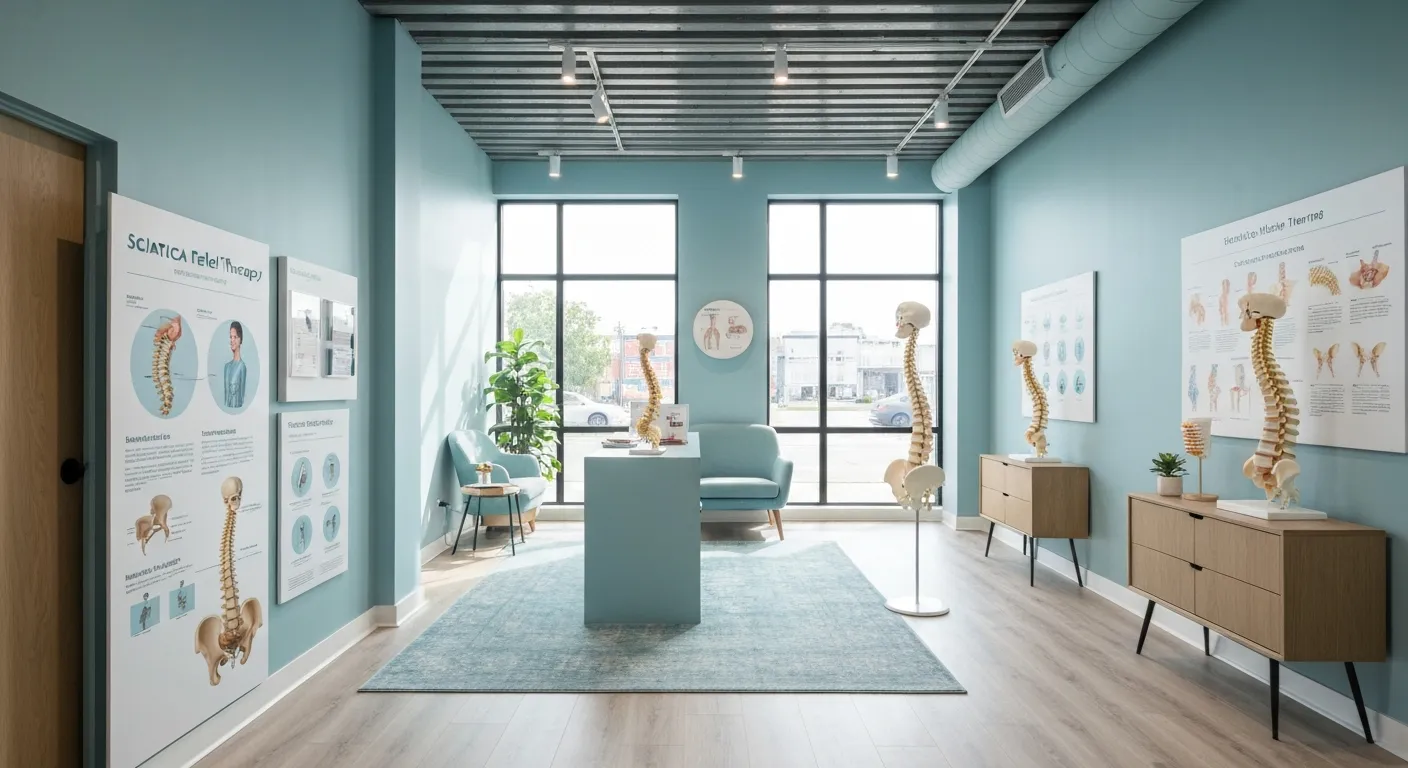
An Introduction to Spinal Decompression for Sciatica Patients
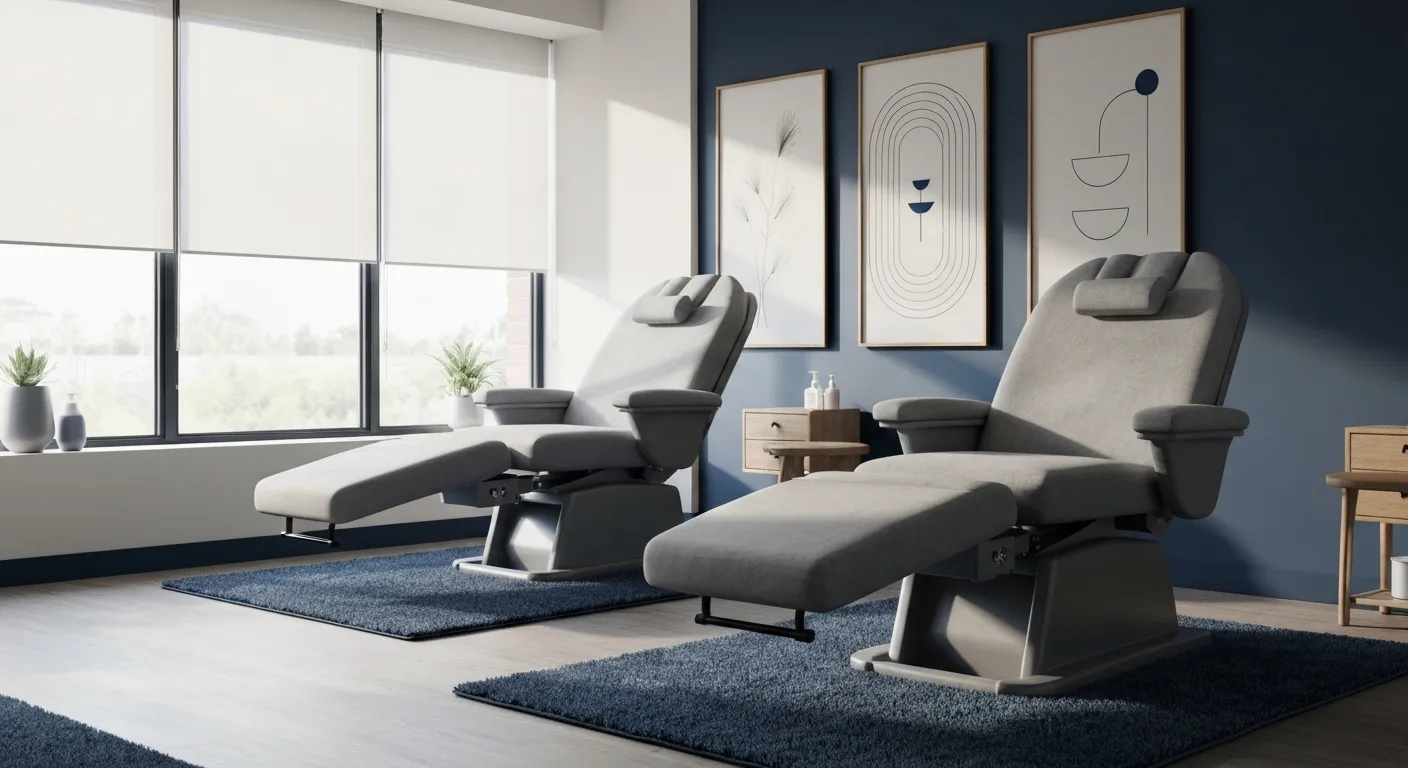
Transformative Success Stories: Patient Experiences with Chiropractic Treatments
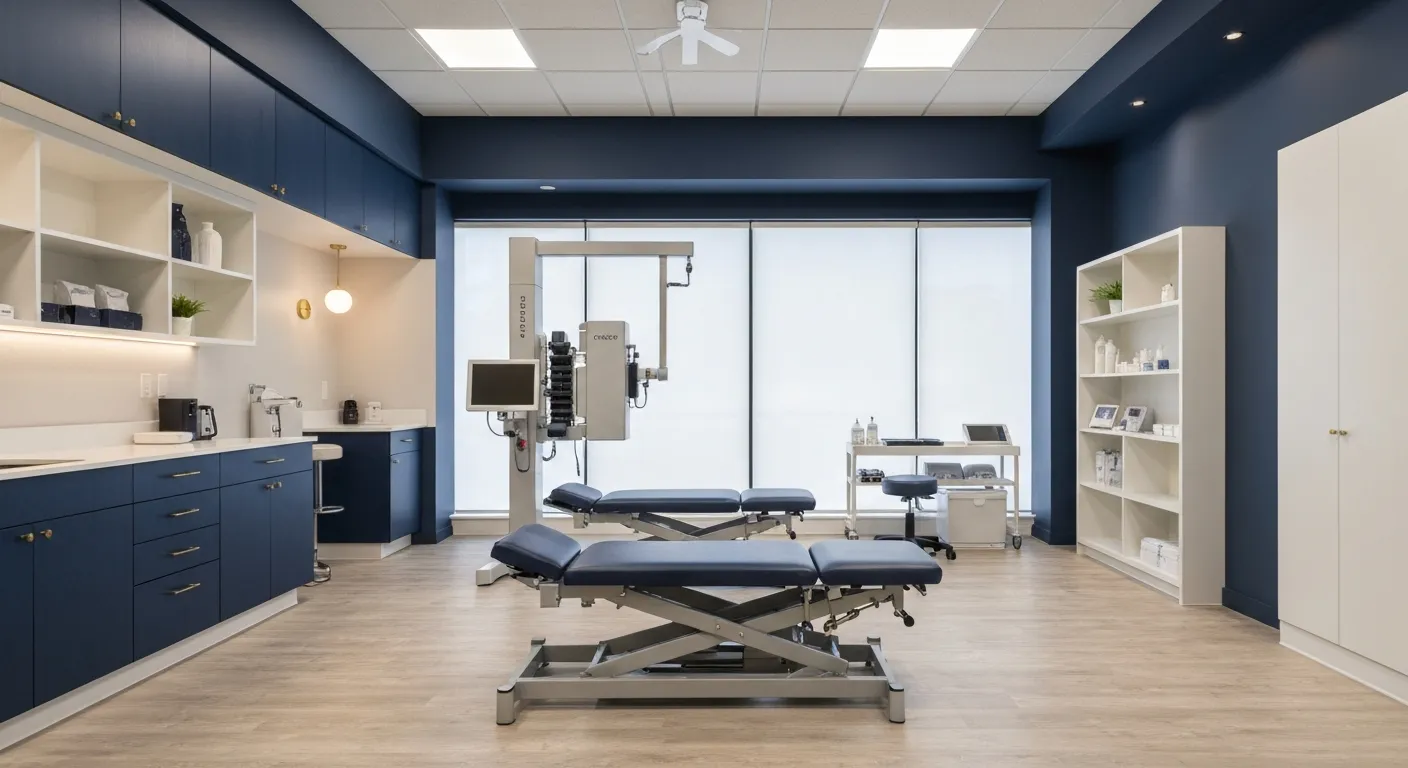
Why Chiropractic Care Is Essential for Back Pain Relief

Addressing Underlying Causes Versus Symptom Management in Pain Care

The Role of Nutrition in Enhancing Chiropractic Treatment Effectiveness

Sciatica Treatment Options: Is Spinal Decompression Right for You?
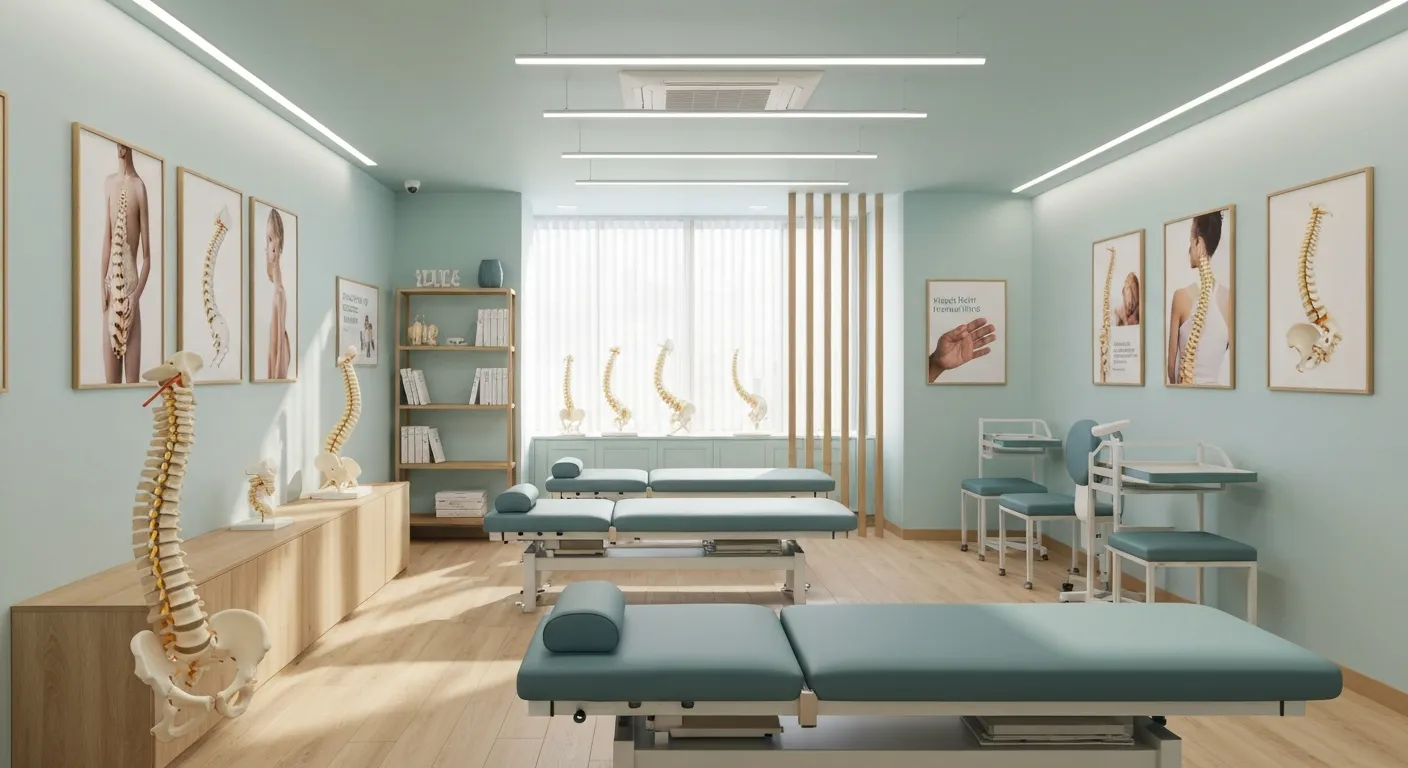
Lifestyle Tips to Maintain a Healthy Spine and Prevent Back Issues

The Synergy Between Physiotherapy and Chiropractic Treatments
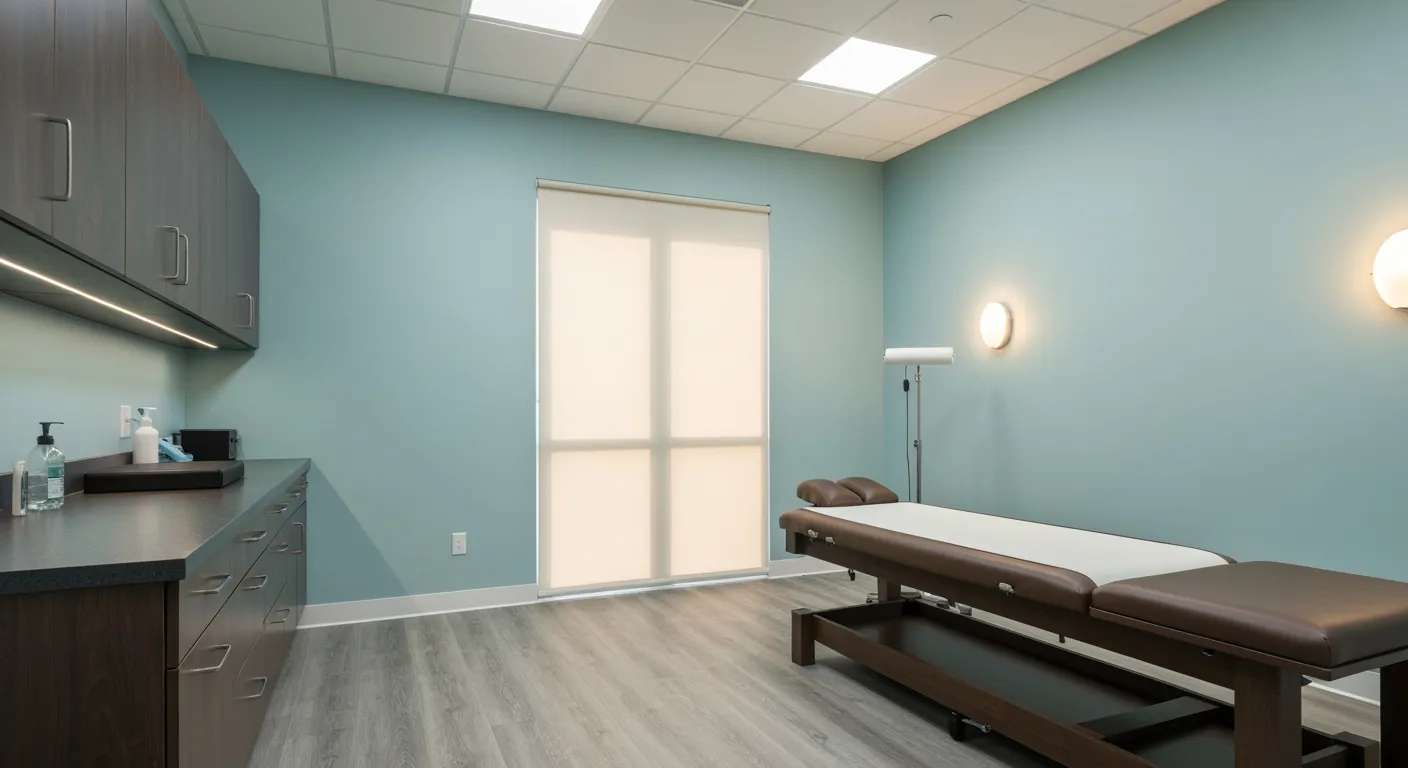
What Happens During Your Initial Chiropractic Consultation
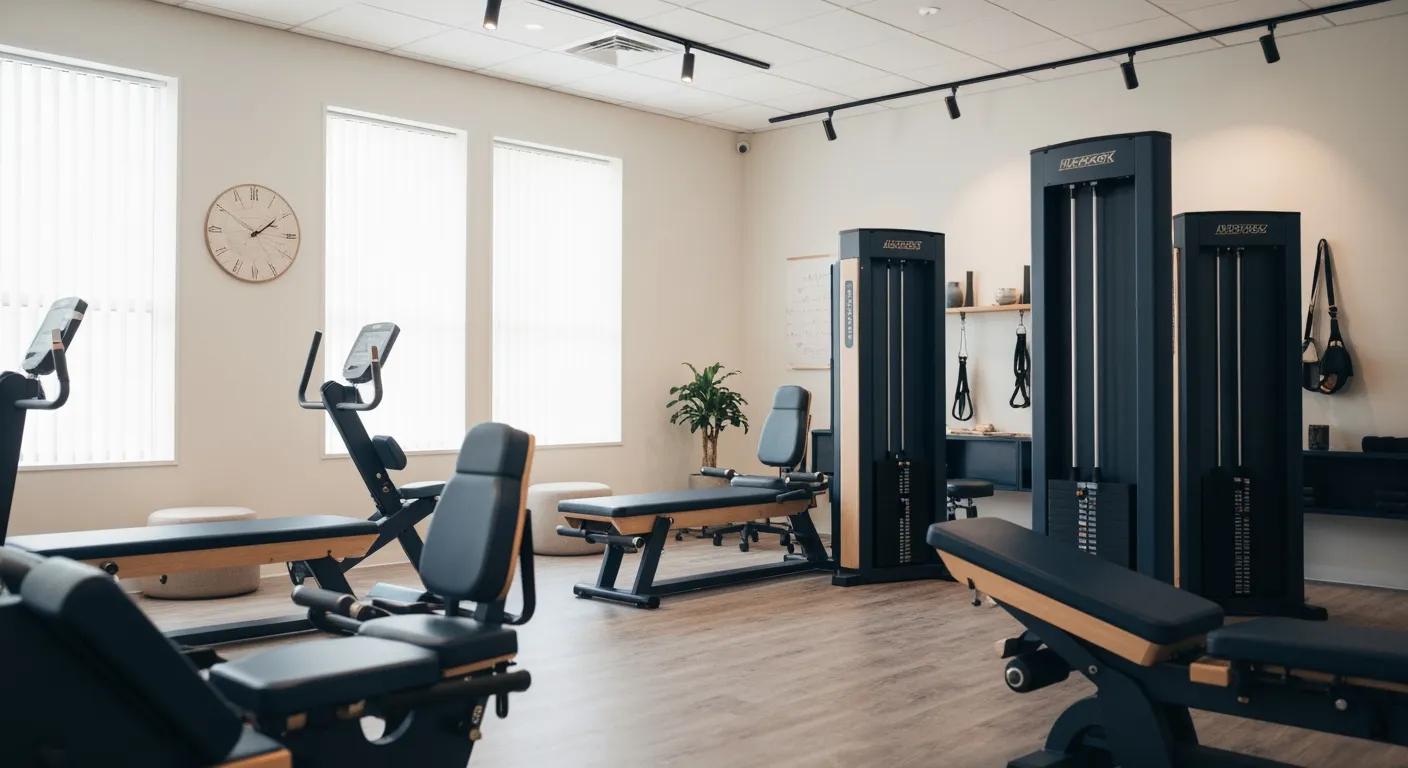
Effective Corrective Exercises for Sustainable Pain Management
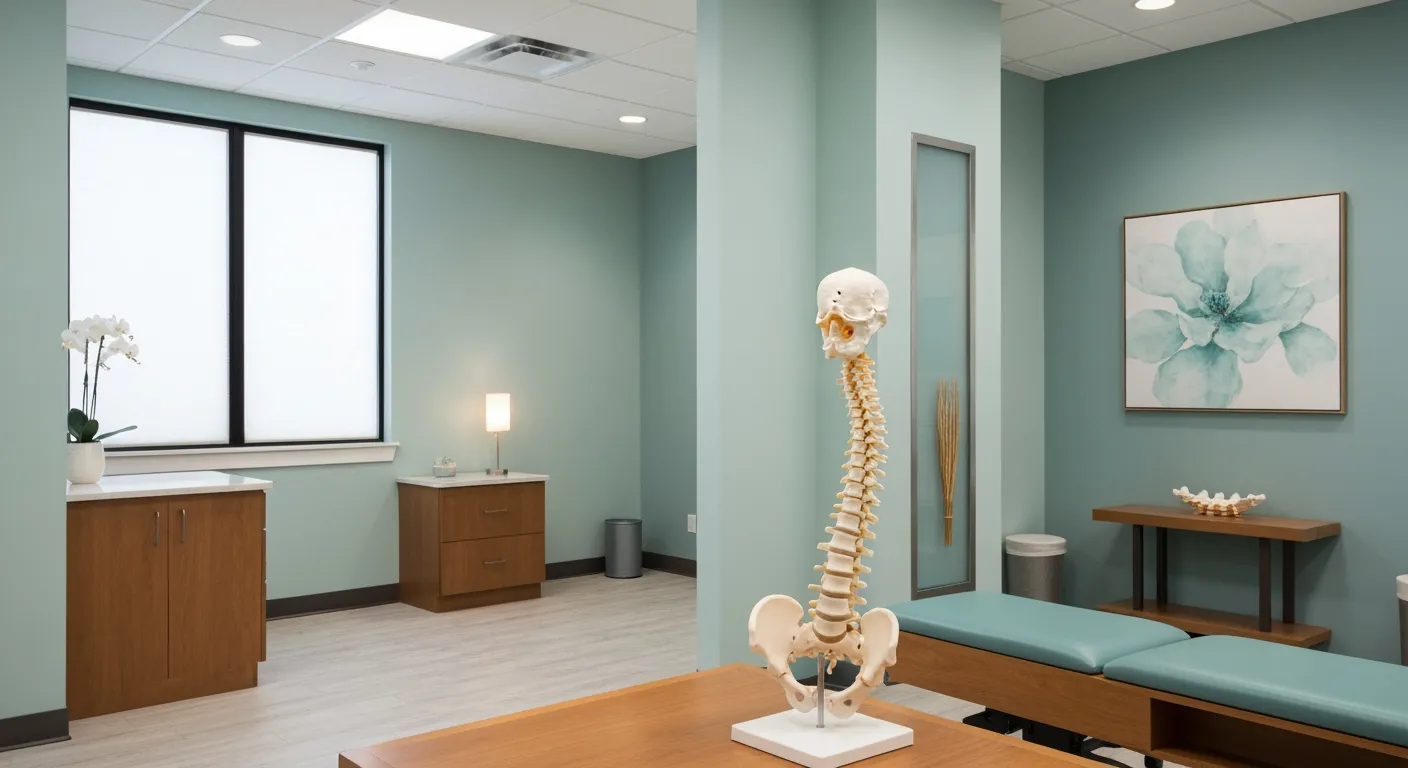
Taking a Root Cause Approach to Chronic Pain Management

Holistic Pain Management Techniques Without Surgery

How Patient Success Stories Validate Chiropractic Care Benefits

Spinal Decompression: Innovative Treatment for Sciatic Nerve Pain
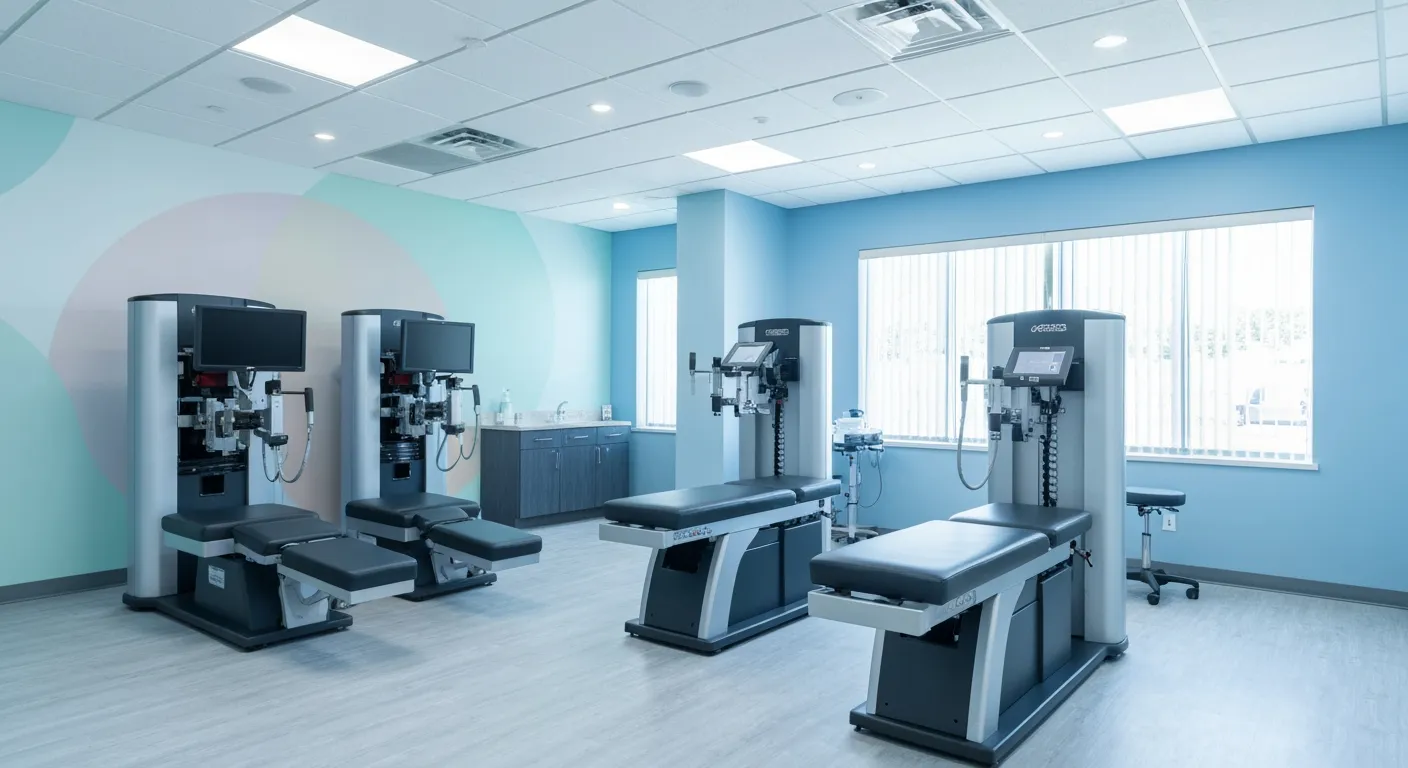
Spinal Decompression Therapy: A Non-Invasive Approach to Sciatica Relief

Exploring Holistic Approaches Beyond Surgery for Pain Relief

Practical Lifestyle Advice to Support a Healthy Spine Every Day
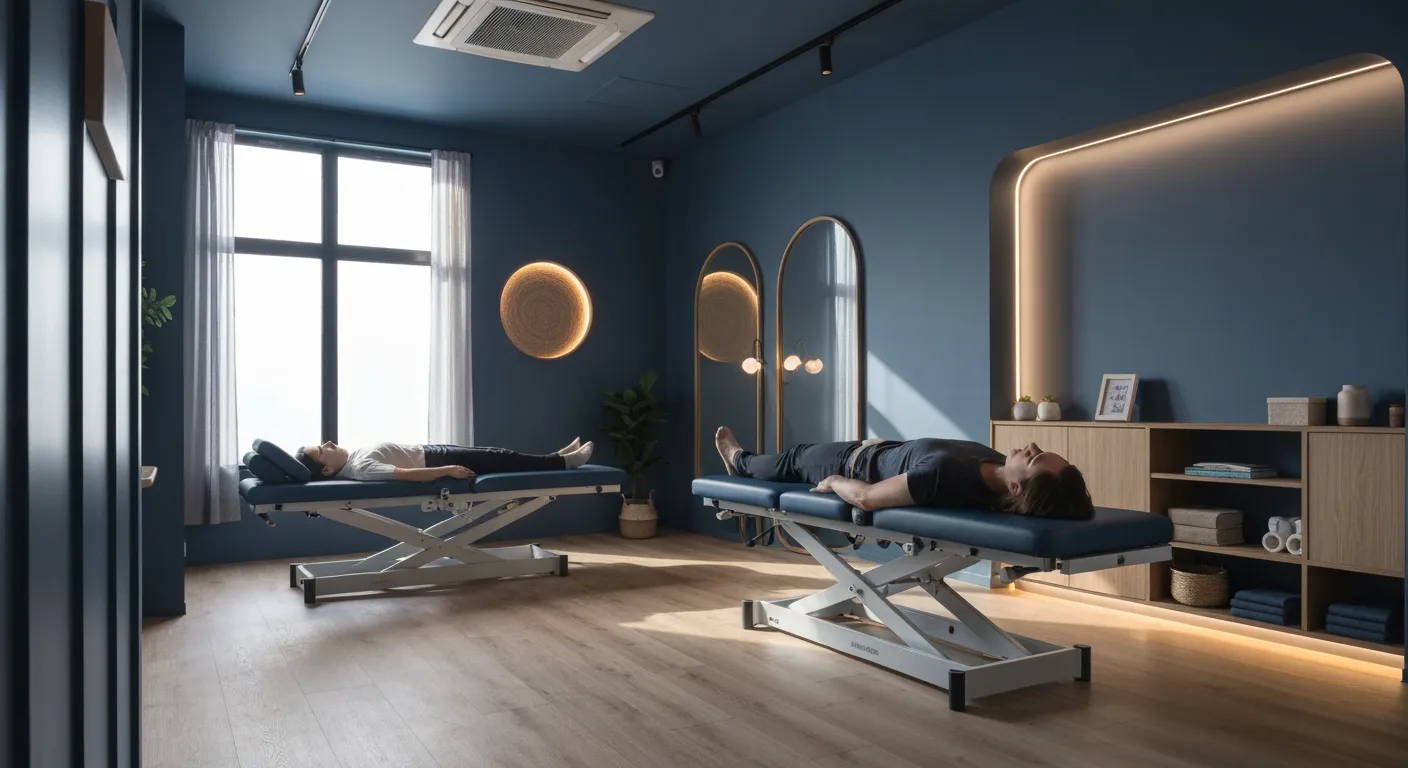
Corrective Exercise Routines Designed for Long-Term Pain Prevention

Real Patient Stories: Overcoming Chronic Pain with Chiropractic Care
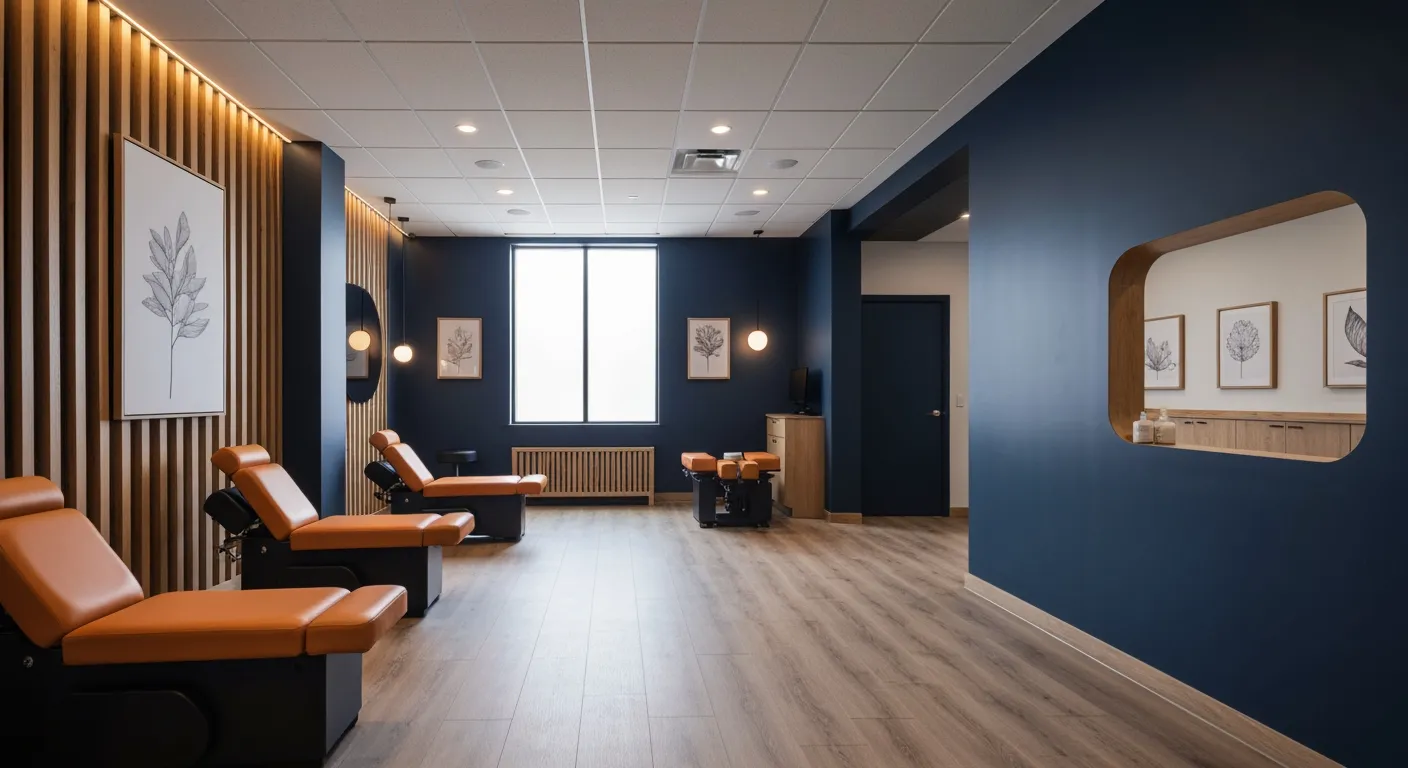
Lifestyle Changes That Promote a Healthy Spine and Prevent Injury

How Addressing the Root Cause of Pain Leads to Lasting Relief

Non-Surgical Holistic Therapies to Manage Chronic Pain Effectively

Nutritional Counseling's Impact on Physical Health and Healing

Benefits of Regular Chiropractic Care for a Stronger Back

Your First Chiropractic Visit: What to Expect and How to Prepare

Patient Experiences: How Chiropractic Care Transformed Their Lives
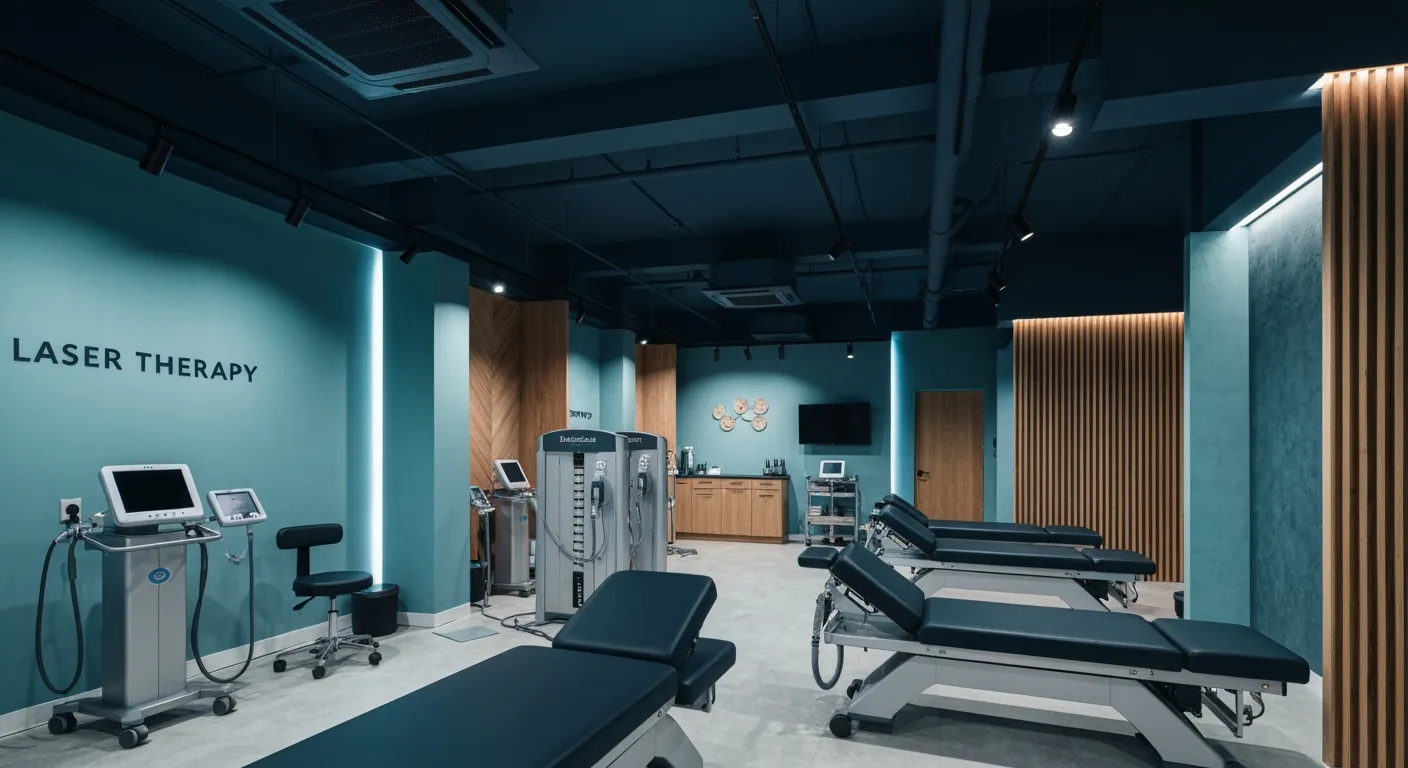
Exploring Holistic, Non-Surgical Options for Pain Management

Combining Physiotherapy with Chiropractic Treatments for Enhanced Recovery

Holistic Treatments That Offer Alternatives to Surgery for Pain Relief

Corrective Exercise Strategies for Long-Term Spine Health
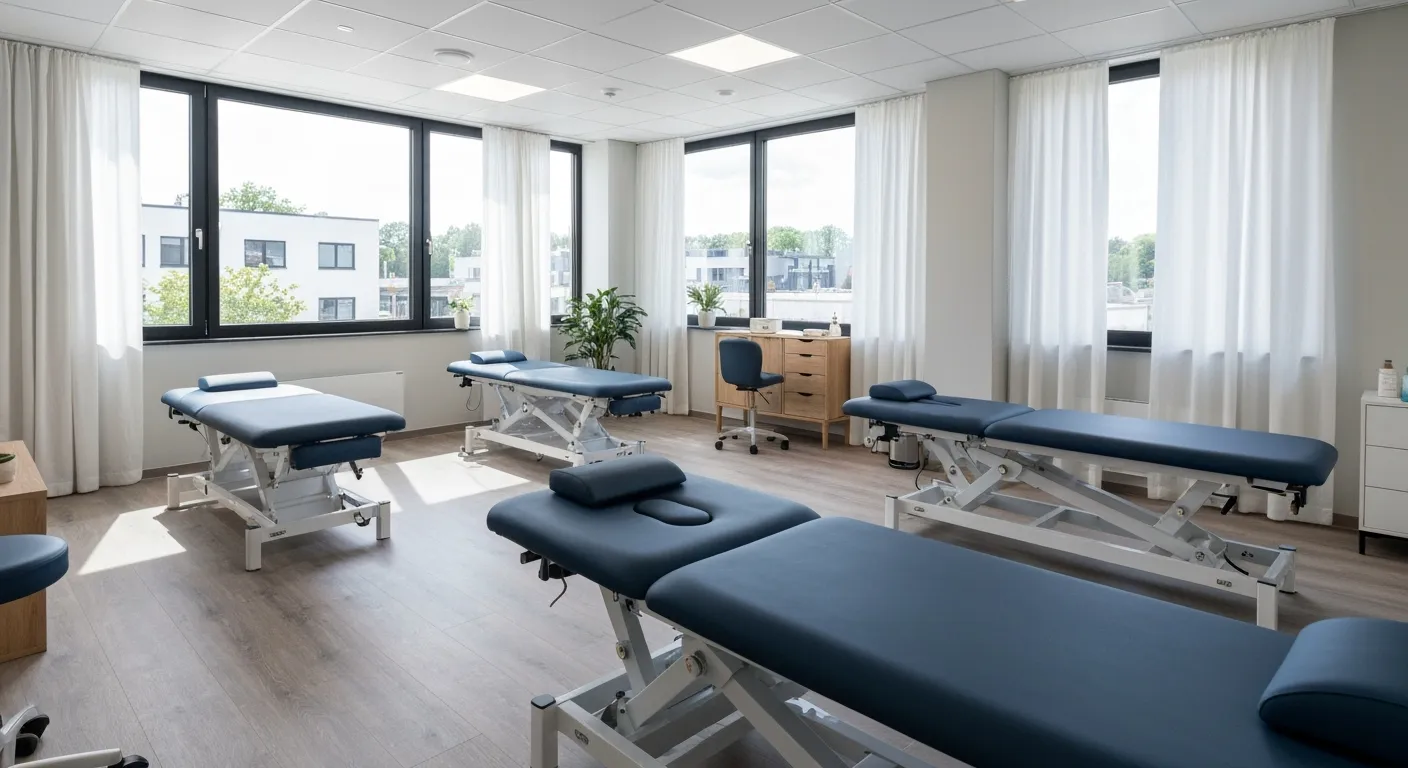
How Physiotherapy Complements Chiropractic Adjustments for Better Outcomes

First-Time Chiropractic Visitors: What You Should Know

Understanding the Importance of Treating Pain at Its Source

Adopting Lifestyle Changes to Support Your Spine's Wellness

Utilizing Physiotherapy to Enhance Chiropractic Treatment Outcomes

The Key Advantages of Chiropractic Care for Back Pain Sufferers

Why Focusing on Root Causes Improves Pain Treatment Success

Corrective Exercises That Promote Lasting Pain Relief and Mobility

Sciatica Relief Through Targeted Spinal Decompression Techniques
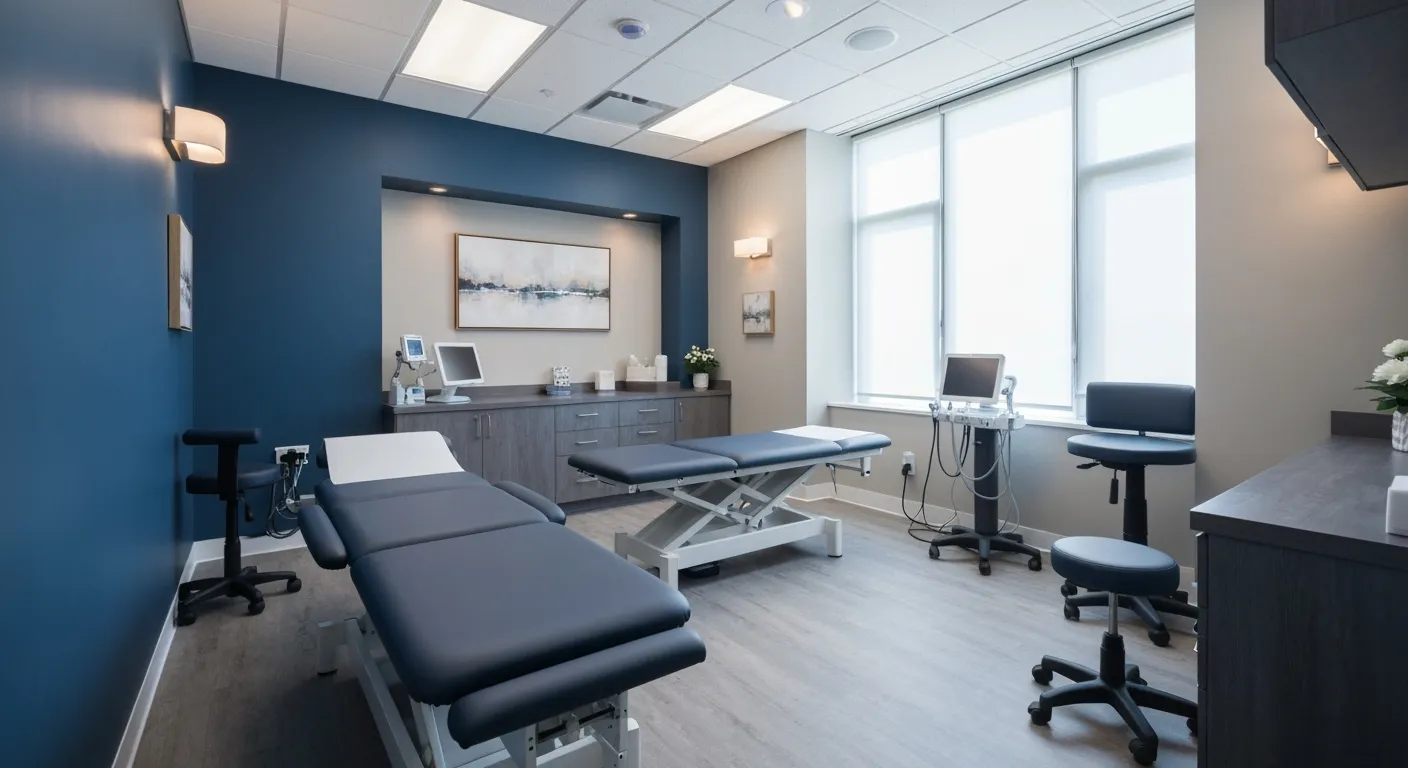
Preparing for Your First Chiropractic Appointment with Confidence

Healthy Lifestyle Habits for Maintaining Spinal Alignment

Success Stories Highlighting Chiropractic's Role in Pain Recovery

Top Benefits of Chiropractic Care for Chronic Back Pain

Nutrition Tips to Boost Your Overall Wellness and Recovery

How Chiropractic Care Alleviates Back Pain Naturally
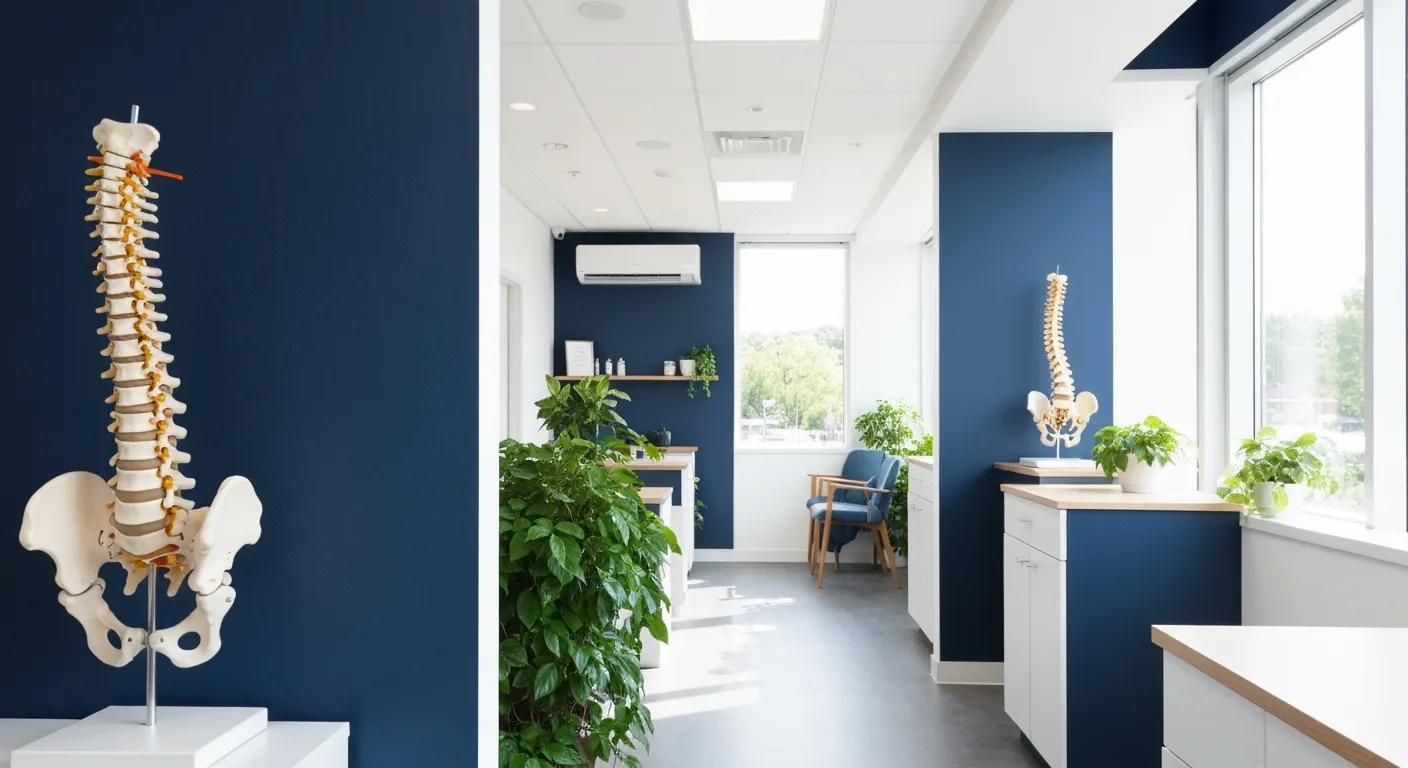
How Nutritional Counseling Supports Overall Wellness and Spine Health
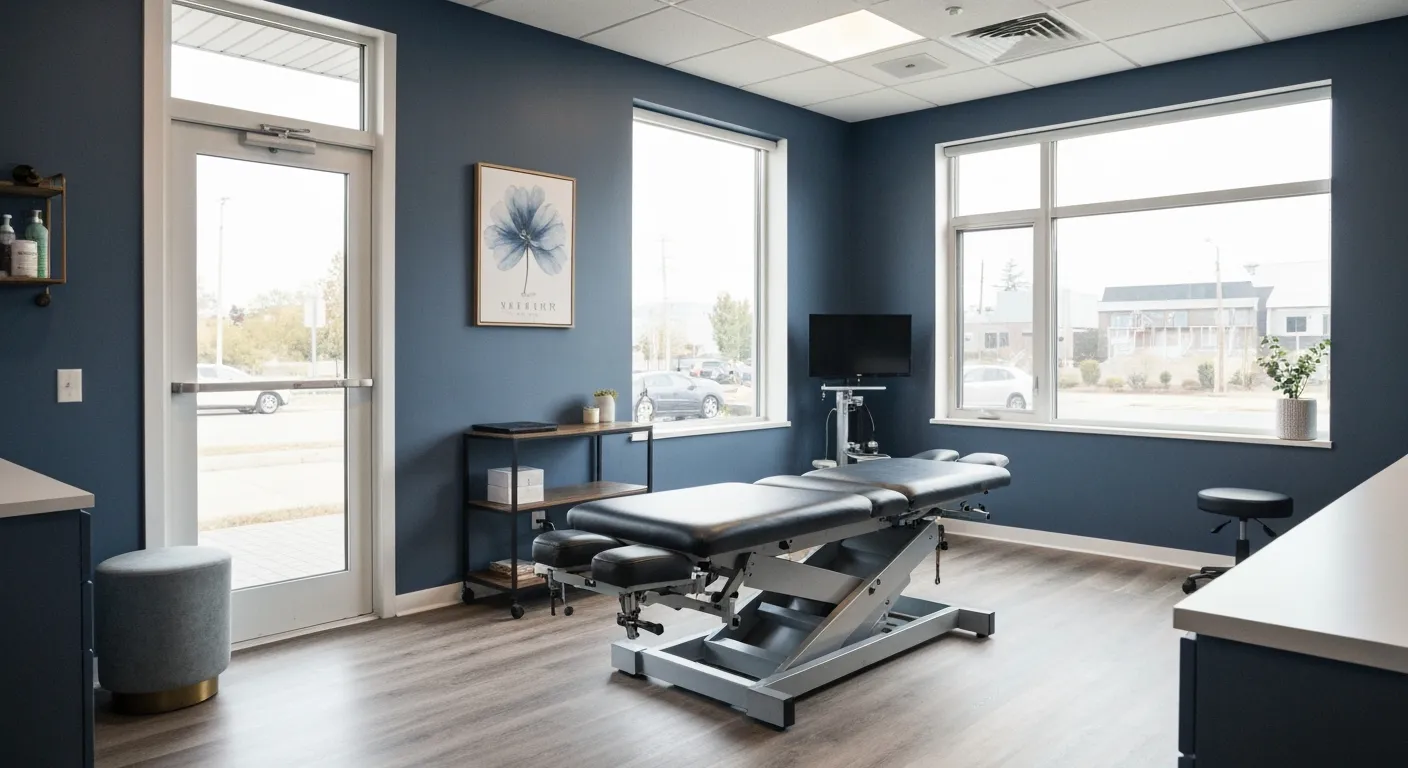
Step-by-Step Guide to Your First Visit with a Chiropractor

Using Nutrition to Support Chiropractic and Overall Wellness

Integrating Physiotherapy in Your Chiropractic Healing Journey

How Physiotherapy Complements Chiropractic Adjustments for Faster Healing
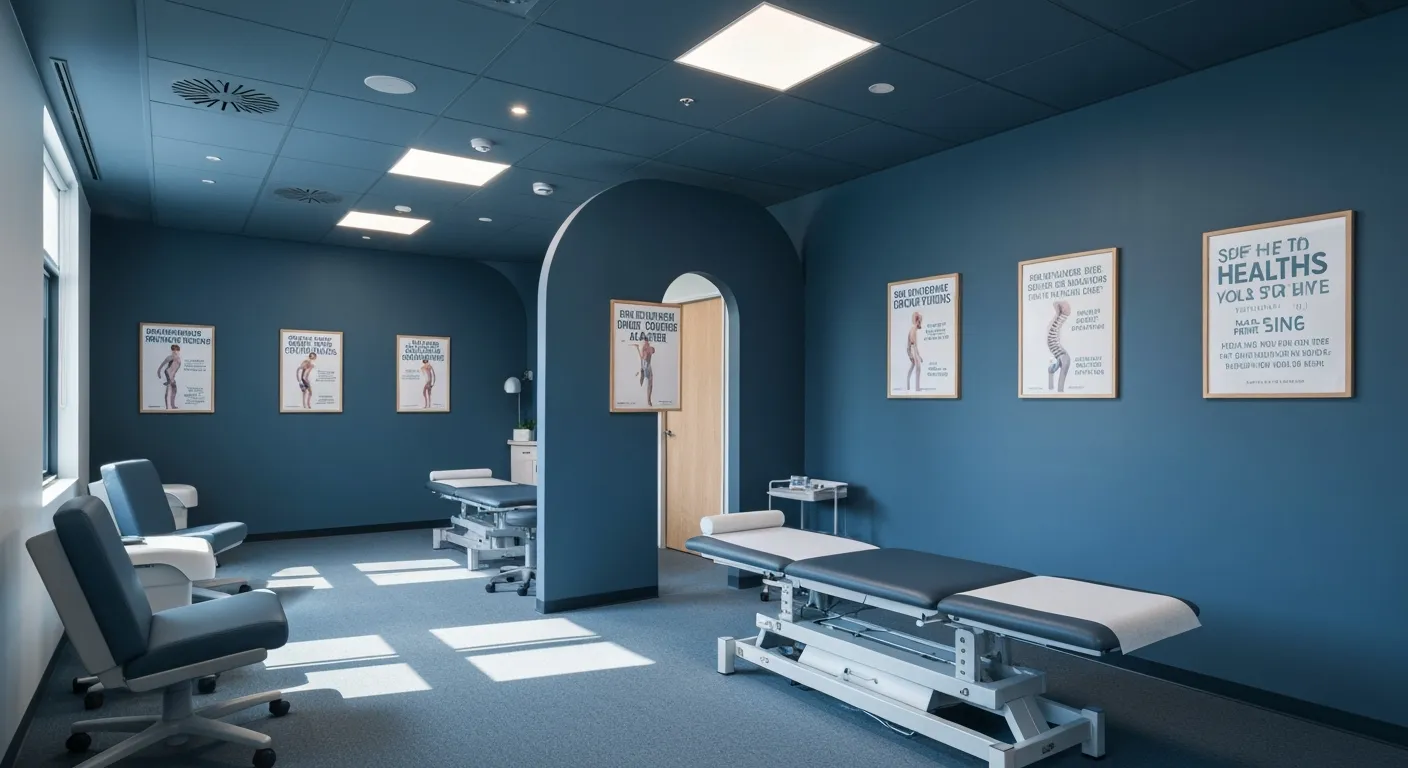
Lifestyle Tips for Maintaining a Healthy Spine and Preventing Back Pain

Heartwarming Patient Testimonials Highlighting Chiropractic Success

How Proper Nutrition Supports Chiropractic and Physiotherapy Treatments

Combining Physiotherapy and Chiropractic Treatments for Optimal Recovery
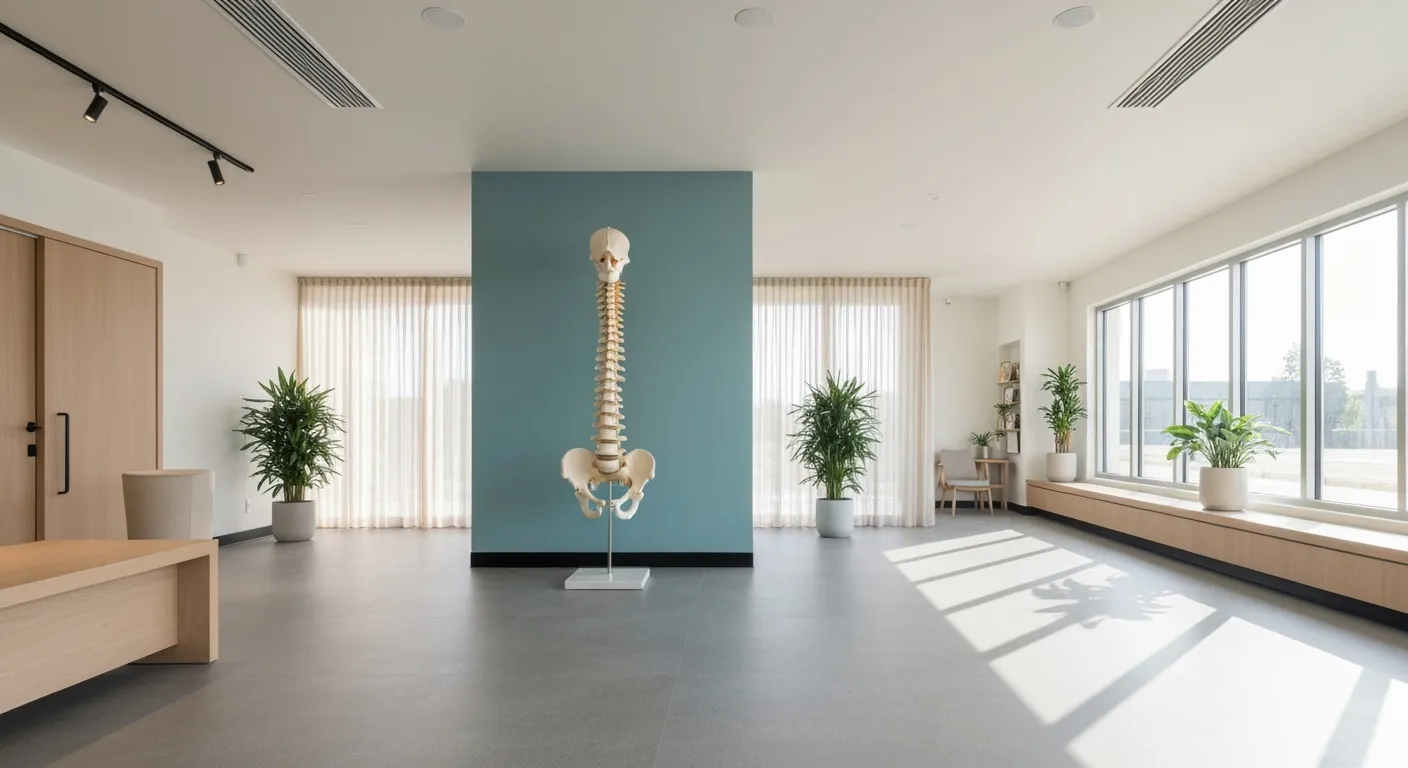
Why Chiropractic Treatments Are Effective for Managing Back Pain

Choosing a Chiropractor: Tips for Finding a Trusted Provider

Integrating Physiotherapy and Chiropractic: Benefits and What to Expect

How Tailored Corrective Exercises Can Aid in Pain Management

Chiropractic Care: A Proven Solution for Alleviating Back Pain

What to Expect at Your First Chiropractic Visit: A Comprehensive Guide

The Importance of Root Cause Analysis in Effective Pain Management

The Role of Corrective Exercises in Sustaining Pain-Free Living

Combining Chiropractic and Physiotherapy for Comprehensive Pain Relief

How Addressing Underlying Causes Improves Pain Treatment Effectiveness
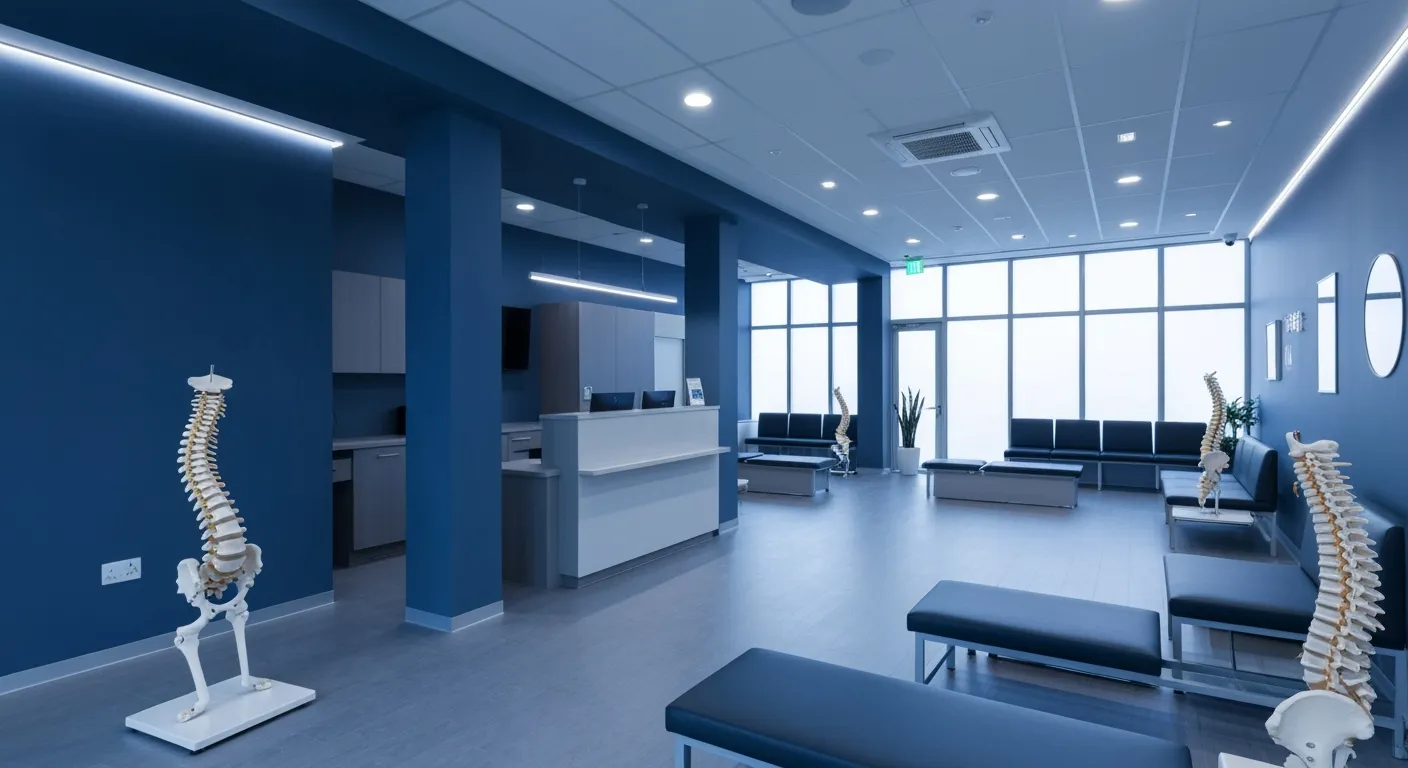
Maintaining Spinal Health Through Lifestyle Changes and Preventive Care

Understanding the Benefits of Chiropractic Adjustments for Back Pain Sufferers

Spinal Decompression Therapy: A New Hope for Sciatica Relief

Lifestyle Recommendations to Support a Healthy Spine and Reduce Pain
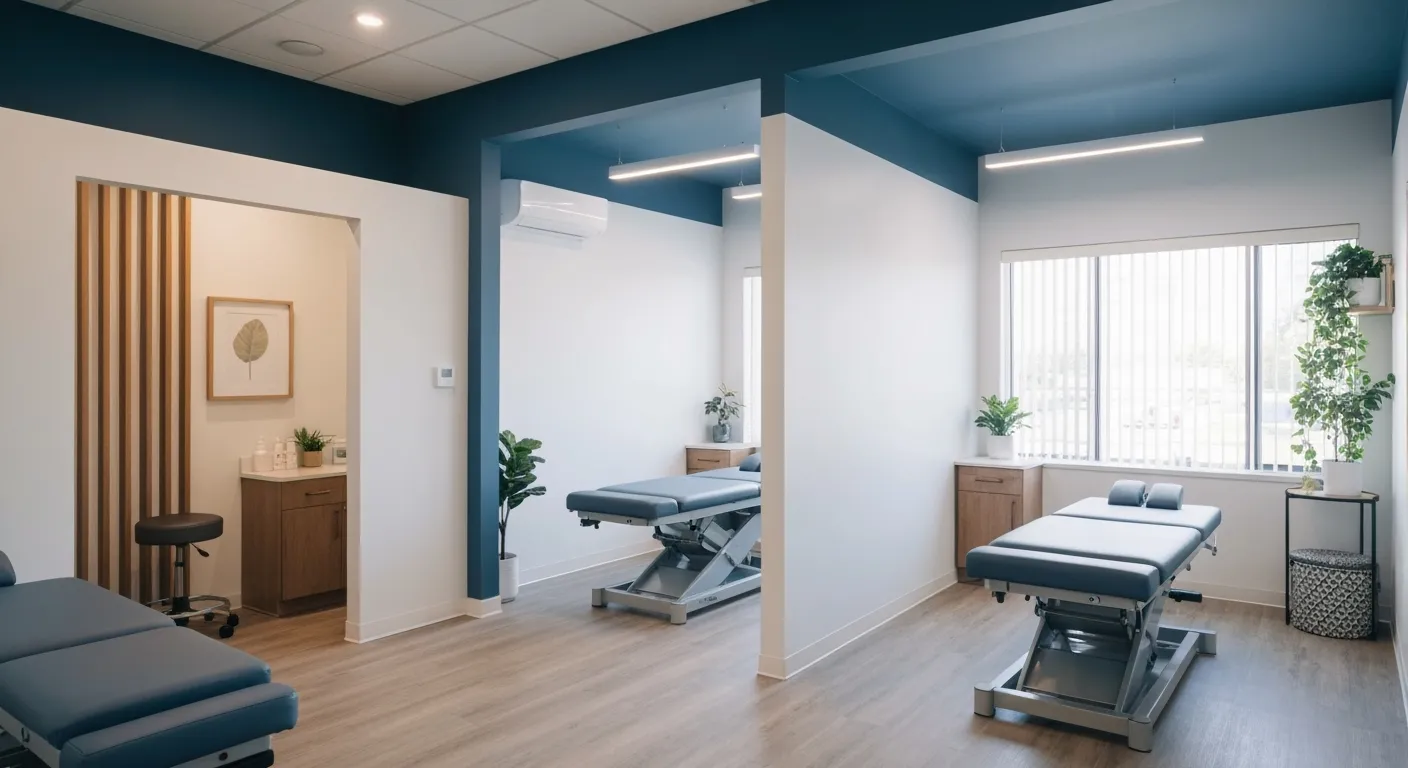
Choosing the Right Chiropractor: Key Factors to Consider Before Your First Appointment

Non-Invasive Treatment Alternatives: A Holistic Approach to Pain Relief

Corrective Exercises to Support Long-Term Relief from Chronic Pain

Exploring Non-Surgical Approaches to Spine Health and Wellness

Tips for Daily Habits That Keep Your Spine Strong

Success Stories: How Chiropractic Treatments Changed Lives

Why Focusing on the Root Cause of Pain Leads to Better Outcomes

Nutritional Counseling and Its Impact on Overall Wellness and Recovery

Patient Testimonials That Showcase the Power of Chiropractic Care

Preparing for Your First Chiropractic Appointment: What You Need to Know

Holistic Treatment Options: Beyond Surgery for Pain Relief
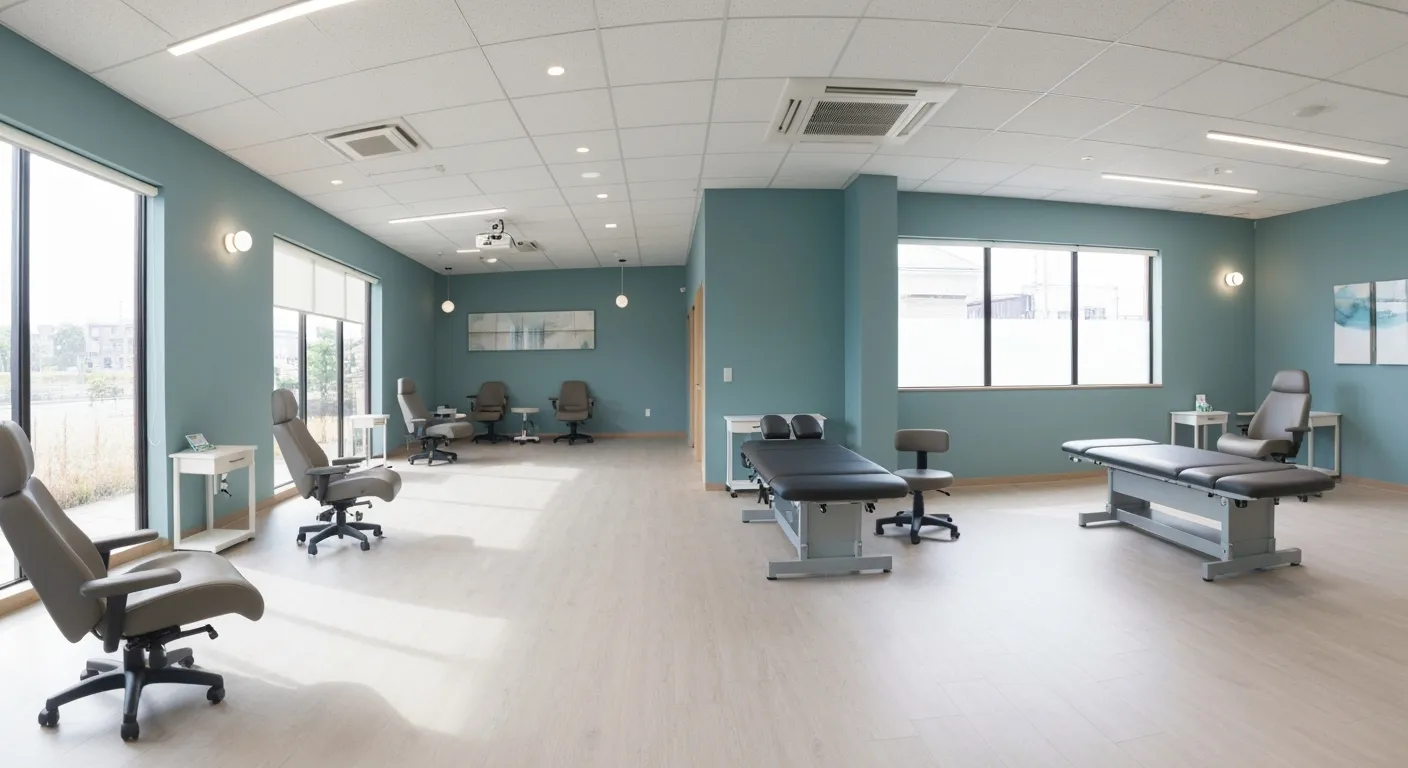
Holistic Pain Relief Methods That Avoid Surgery

Nutritional Strategies for Supporting Spine Health and Recovery

First Chiropractic Visit: What Happens and How to Prepare

Chiropractic Patient Success Stories: Inspiring Journeys to Wellness

Effectiveness of Spinal Decompression Therapy in Managing Sciatic Nerve Pain

Addressing Pain at Its Source: Why Treating the Root Cause Matters

Corrective Exercise Programs Designed for Long-Term Pain Prevention

Healthy Lifestyle Advice for Maintaining Spinal Alignment
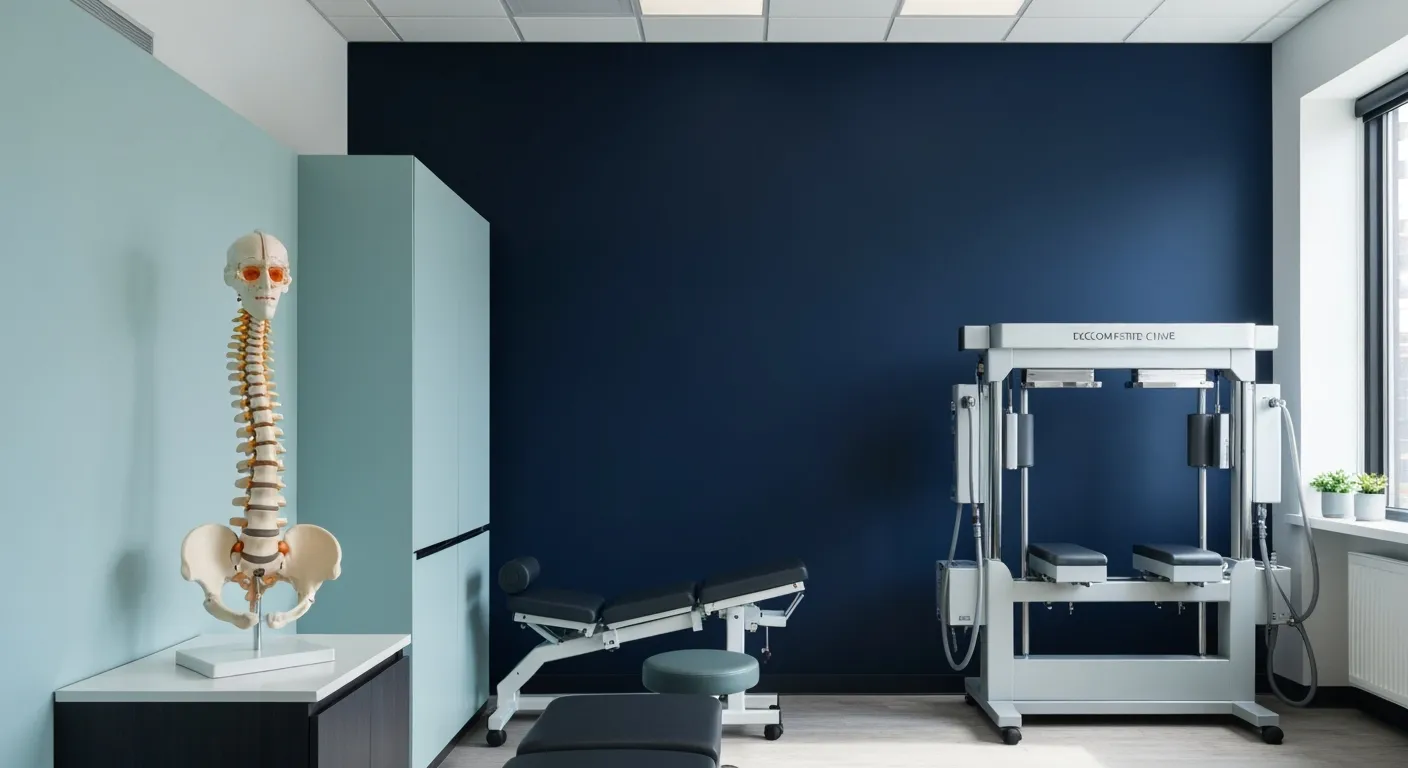
Understanding Spinal Decompression as a Treatment for Sciatica Pain
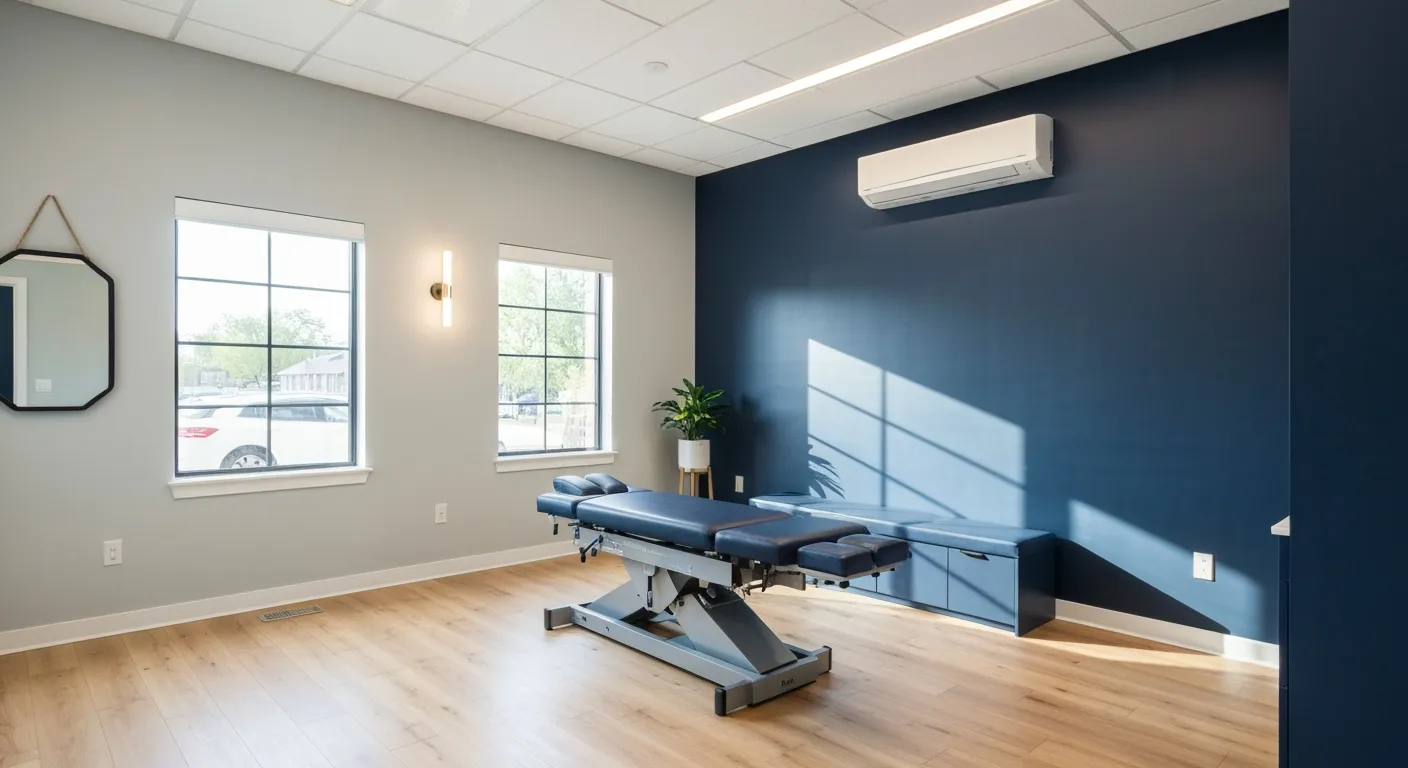
Benefits of Chiropractic Care Specifically for Back Pain Relief

Understanding Gait Analysis in Physiotherapy
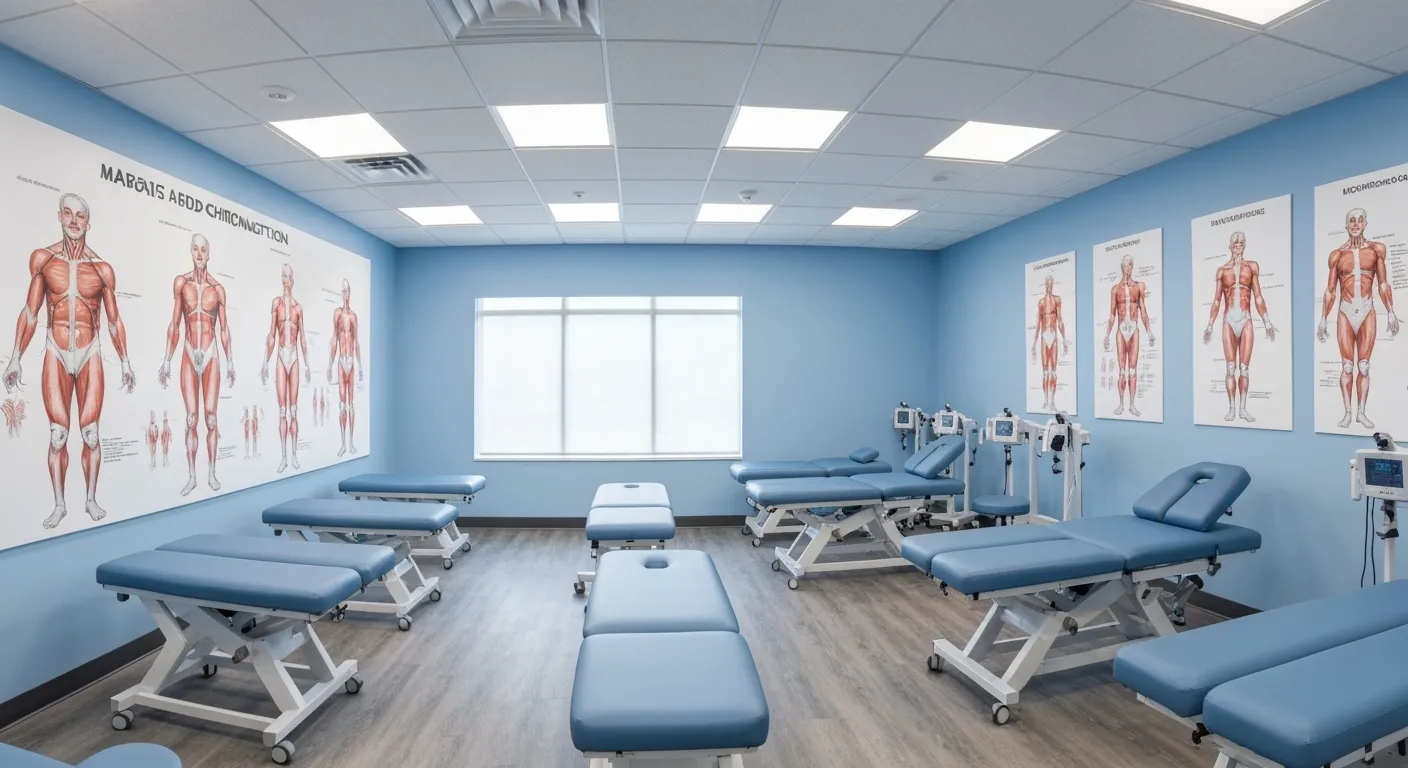
The Difference Between Muscle Soreness and Dysfunction
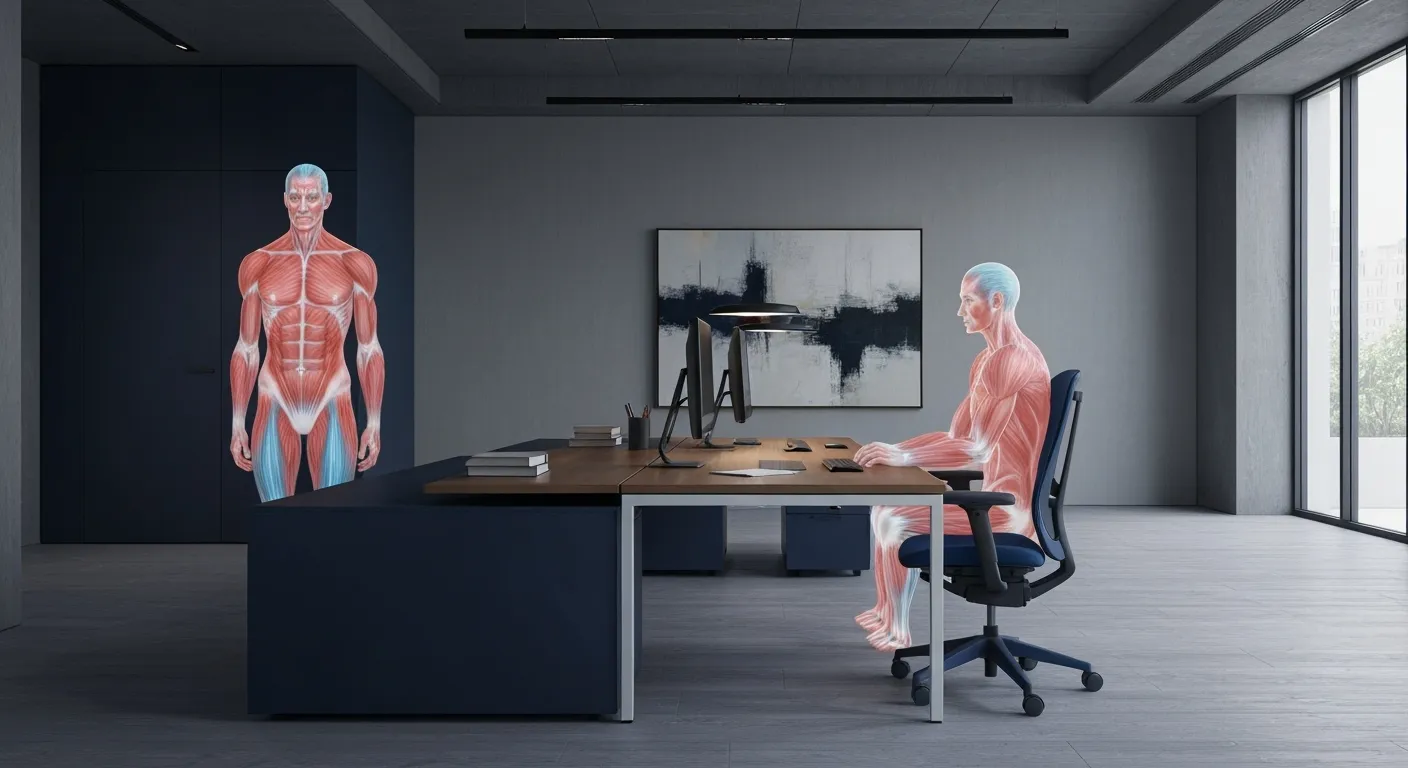
Workplace Stress Statistics: How Muscle Tension Impacts Productivity

How Physiotherapy Improves Mobility for Seniors

How to Communicate Pain Levels to Your Therapist Effectively

